![]()
By Gypsy Blue Rose

| Author Note: | For Rules, Please Read My Author Notes |
boy lies on the grass
covering the sun —
with his thumb
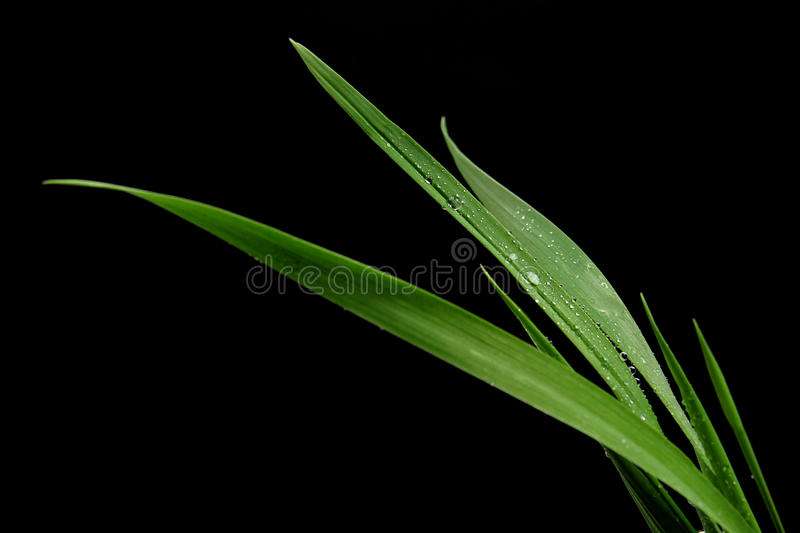
| Author Notes |
I couldn't find an exact picture. You'll have to use your imagination. LoL
SENRYU is a Japanese poetic form similar to haiku. It's written in 3 lines with 17 syllables OR LESS usually in a shot/long/short form. Senryu is about human foibles while haiku tend to be about nature. Senryu doesn't need a season word (kigo) but it's okay if you do. It never rhymes. It uses imagery. for more information click here Thank you very much for taking the time to read and review my poem. Gypsy "The poet waits quietly to paint the unsaid." Atticus picture from pinterest |
![]()
By Gypsy Blue Rose

| Author Note: | For My Friend |
riding rageful waves
of painful memories —
curled around the sun

| Author Notes |
Negative memories rapture our minds unannounced with overwhelming waves of emotions that can be our damnation or liberation.
HAIKU is a Japanese short unrhymed poem that uses imagistic language to express the essence of a deeply felt moment in time. It resonates on a deeper level, leaving the reader enlightened and making an insightful connection between the top two lines and the last one, called the SATORI. It originated in the thirteenth century and was mastered a century later by Matsuo Basho. HAIKU uses a dash to pause before the SATORI.. Haiku is about nature and it alludes to a season of the year. The haiku is written from an observer's point of view. In Japan, haiku is written in 17 syllables and three lines ( 5/7/5) but in English is 17 syllables OR LESS because English syllables are longer than Japanese syllables. Avoid capitalization (except proper names) and punctuation. Avoid metaphor and personification, you write about what you can SEE. === click here to read Haiku Society of America, HAIKU EXAMPLES === click here to read Haiku Society of America HAIKU RULES === click here to read why is 5/7/5 OR LESS rule === Modern Haiku Thank you very much for taking the time to read and review my poem. Gypsy "Poetry heals the wounds inflicted by reason." - Novalis |
![]()
By Gypsy Blue Rose

| Author Note: | For Rules, Please Read My Author Notes |
ride home
from the hospital
was quiet —
baby stroller full of grief
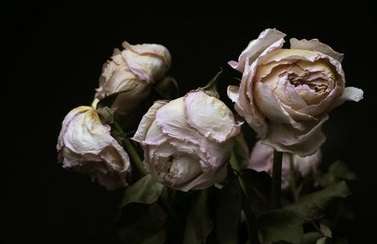
| Author Notes |
SciFaiku is a form of science fiction poetry first announced by Tom Brincki in the SciFaiku Manifesto (July 1995) SciFaiku is inspired by Japanese haiku, but explores science fiction (SF), and horror. They are based on the principles and form of haiku but can deviate from its structure. The scifaiku are succinct, 17 syllables or less in one to four lines. SciFaiku uses poetic devices and in present tense. Human insight comes from the idea that the purpose of much science fiction is to understand ourselves better through exploring possible futures or speculative realities.
to read more click here Thank you very much for taking the time to read and review my poem. Gypsy "Poetry heals the wounds inflicted by reason." - Novalis picture from pinterest |
![]()
By Gypsy Blue Rose

| Author Note: | poem in black font on my author notes |
luna wolf protects
and provides for all her pups
with mother’s fury
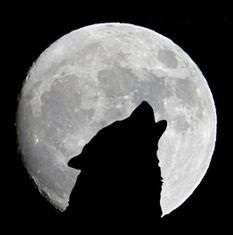
| Author Notes |
Luna = Moon
luna wolf protects and provides for all her pups with mother's fury A female wolf is called a luna wolf, she is the alpha female. A spirit animal is often characterized as a teacher or a messenger that comes in the form of an animal. Native American spirit animals hold a sacred place inside tribal culture. My spirit animal is a wolf = meaning of a wolf animal spirit is =: Protection, partnership, loyalty, compassion, spirituality, togetherness, and power. List of Spirit Animals and their meaning Thank you for reading and reviewing my poem :) Gypsy pictures from pinterest |
![]()
By Gypsy Blue Rose

wind whistles midst trees
as leaf falls over the creek —
bug sails out to sea
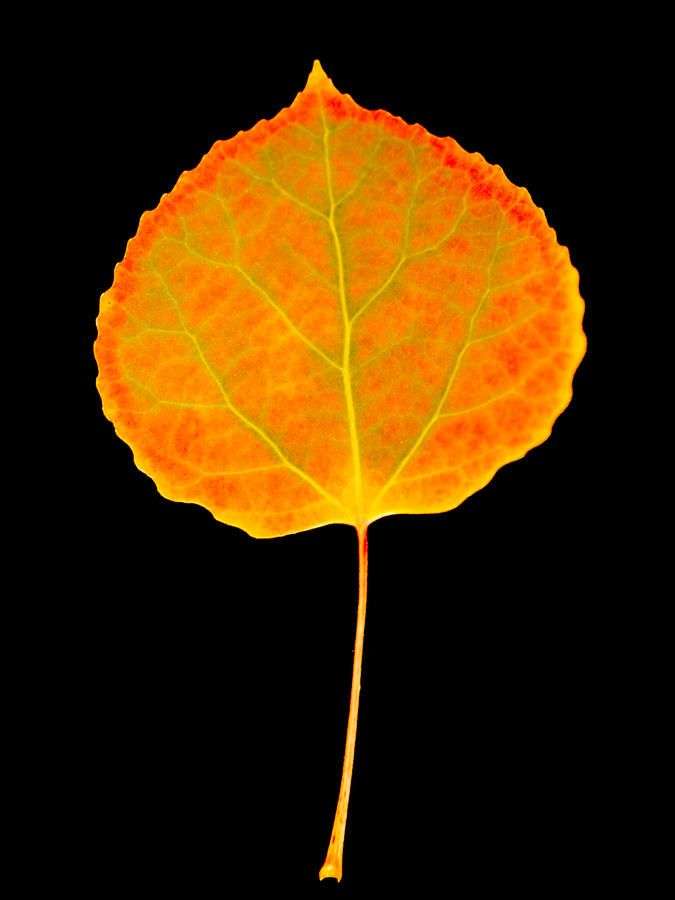
| Author Notes |
Diverse groups of insects are found on the shores
5/7/5 poem written in 3 lines with a 5/7/5 syllables pattern. The lines are connected grammatically and it doesn't rhyme. It's similar to haiku but has fewer rules, just the syllables and lines count. Thank you very much for taking the time to read and review my poem. Gypsy "The poet waits quietly to paint the unsaid." Atticus picture from pinterest |
![]()
By Gypsy Blue Rose

stardust dusk
over the murmuring river —
caressing moon rocks
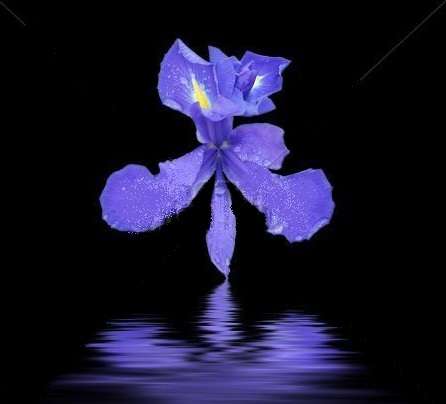
| Author Notes |
HAIKU is a Japanese short unrhymed poem that uses imagistic language to express the essence of a deeply felt moment in time. It resonates on a deeper level, leaving the reader enlightened and making an insightful connection between the top two lines and the last one, called the SATORI. It originated in the thirteenth century and was mastered a century later by Matsuo Basho. HAIKU uses a dash to pause before the SATORI.. Haiku is about nature and it alludes to a season of the year. The haiku is written from an observer's point of view. In Japan, haiku is written in 17 syllables and three lines ( 5/7/5) but in English is 17 syllables OR LESS because English syllables are longer than Japanese syllables. Avoid capitalization (except proper names) and punctuation. Avoid metaphor and personification, you write about what you can SEE. === click here to read Haiku Society of America, HAIKU EXAMPLES === click here to read Haiku Society of America HAIKU RULES === click here to read why is 5/7/5 OR LESS rule === Modern Haiku
Thank you very much for taking the time to read and review my poem. Gypsy "Poetry heals the wounds inflicted by reason." - Novalis |
![]()
By Gypsy Blue Rose

sunset dips into
mountain ridge —
warmhearted farewell
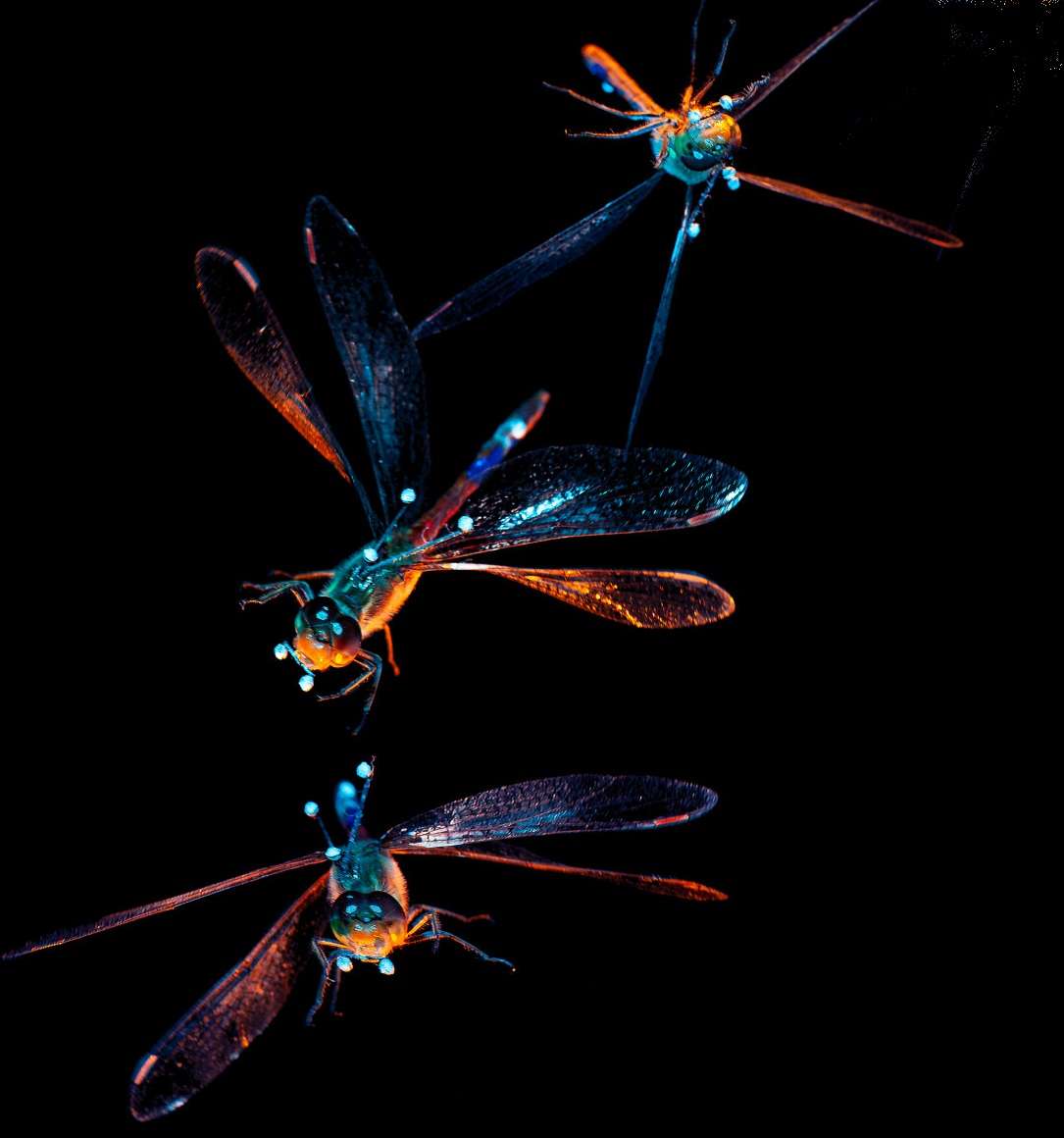
| Author Notes |
LUNE is also known as the American Haiku. It was created by the poet Robert Kelly in the 60s. It consists of 3 lines with 5/3/5 syllables, no other rules apply. The subject matter can be anything you like. The original Lune was 3/5/3 syllables and looked like a crescent moon, thus the name, Lune (moon) for more information click here
Thank you for taking the time to read and review my poem. Gypsy |
![]()
By Gypsy Blue Rose

| Author Note: | For Rules, Please Read My Author Notes |
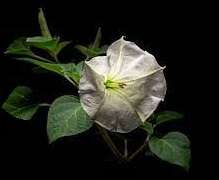
| Author Notes |
pictures from pinterest, the bottom picture is a moon flower
Haiku is a form of Japanese poetry made of short, unrhymed lines that evoke natural imagery. The haiku gives a moment of insight based on observation. Japanese haiku are written in 3 lines with 5/7/5 syllables form. In English is 3 lines with 17 syllables OR LESS due to the difference between Japanese and English syllables. haiku contains two separate parts: A section that creates an image (often the first two lines, but not always) Then another section which is different but connected√????√???√??√?¬¢??perhaps suggesting an interpretation of the first image, perhaps suggesting a contrast. Haiku should be clear and direct, with strong images in a compact and concise manner. for haiku rules click here - modern Haiku rules Thank you for reading and reviewing my poem. Gypsy "Poetry heals the wounds inflicted by reason" -- Novalis |
![]()
By Gypsy Blue Rose

| Author Note: | For Rules, Please Read My Author Notes |
morning coffee
on my porch admiring the view —
lake full of clouds

| Author Notes |
HAIKU is a Japanese short unrhymed poem that uses imagistic language to express the essence of a deeply felt moment in time. It resonates on a deeper level, leaving the reader enlightened and making an insightful connection between the top two lines and the last one, called the SATORI. It originated in the thirteenth century and was mastered a century later by Matsuo Basho. HAIKU uses a dash to pause before the SATORI.. Haiku is about nature and it alludes to a season of the year. The haiku is written from an observer's point of view. In Japan, haiku is written in 17 syllables and three lines ( 5/7/5) but in English is 17 syllables OR LESS because English syllables are longer than Japanese syllables. Avoid capitalization (except proper names) and punctuation. Avoid metaphor and personification, you write about what you can SEE. === click here to read Haiku Society of America, HAIKU EXAMPLES === click here to read Haiku Society of America HAIKU RULES === click here to read why is 5/7/5 OR LESS rule === Modern Haiku
Thank you very much for taking the time to read and review my poem. Gypsy "Poetry heals the wounds inflicted by reason." - Novalis painting by Xmrfel |
![]()
By Gypsy Blue Rose

| Author Note: | For Rules, Please Read My Author Notes |
camping alone —
the beauty of the night
just between the moon and me
| Author Notes |
HAIKU is a Japanese short unrhymed poem that uses imagistic language to express the essence of a deeply felt moment in time. It resonates on a deeper level, leaving the reader enlightened and making an insightful connection between the top two lines and the last one, called the SATORI. It originated in the thirteenth century and was mastered a century later by Matsuo Basho. HAIKU uses a dash to pause before the SATORI.. Haiku is about nature and it alludes to a season of the year. The haiku is written from an observer's point of view. In Japan, haiku is written in 17 syllables and three lines ( 5/7/5) but in English is 17 syllables OR LESS because English syllables are longer than Japanese syllables. Avoid capitalization (except proper names) and punctuation. Avoid metaphor and personification, you write about what you can SEE. === click here to read Haiku Society of America, HAIKU EXAMPLES === click here to read Haiku Society of America HAIKU RULES === click here to read why is 5/7/5 OR LESS rule === Modern Haiku
Thank you very much for taking the time to read and review my poem. Gypsy "Poetry heals the wounds inflicted by reason." - Novalis painting by Xmrfel |
![]()
By Gypsy Blue Rose
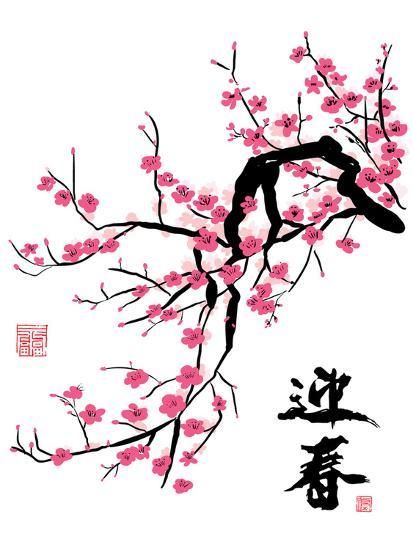
torn from stretching limbs
dive into rapid river —
fallen plum blossoms
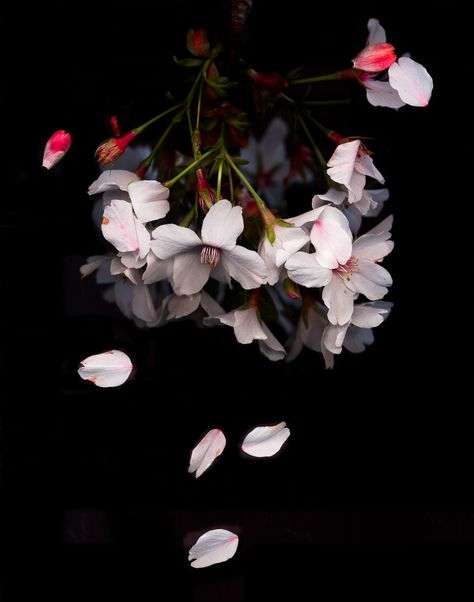
| Author Notes |
5/7/5 poem written in 3 lines with a 5/7/5 syllables pattern. The lines are connected grammatically and it doesn't rhyme. It's similar to haiku but has fewer rules, just the syllables and lines count. Since the rules of 5/7/5 poems are only line and syllable count, some 5/7/5 are haiku but it's not required.
Thank you very much for taking the time to read and review my poem. Gypsy "The poet waits quietly to paint the unsaid." Atticus painting by Yienkeat |
![]()
By Gypsy Blue Rose

dawn’s rising sun dries
dewy morning-glory tears —
shaking off the night

| Author Notes |
Morning Glory is a flower
HAIKU is a Japanese short unrhymed poem that uses imagistic language to express the essence of a deeply felt moment in time. It resonates on a deeper level, leaving the reader enlightened and making an insightful connection between the top two lines and the last one, called the SATORI. It originated in the thirteenth century and was mastered a century later by Matsuo Basho. HAIKU uses a dash to pause before the SATORI.. Haiku is about nature and it alludes to a season of the year. The haiku is written from an observer's point of view. In Japan, haiku is written in 17 syllables and three lines ( 5/7/5) but in English is 17 syllables OR LESS because English syllables are longer than Japanese syllables. Avoid capitalization (except proper names) and punctuation. Avoid metaphor and personification, you write about what you can SEE. === click here to read Haiku Society of America, HAIKU EXAMPLES === click here to read Haiku Society of America HAIKU RULES === click here to read why is 5/7/5 OR LESS rule === Modern Haiku Thank you very much for taking the time to read and review my poem. Gypsy "Poetry heals the wounds inflicted by reason." - Novalis pictures from pinterest |
![]()
By Gypsy Blue Rose

| Author Note: | For Rules, Please Read My Author Notes |
Cold
wind cuts
like sharp glass.
Alpine crow flies
over the tallest peaks —
Mount Everest in its eyes

| Author Notes |
-- I'm counting 'Everest'; as 2 syllables [ ev-rist ]
-- Mount Everest heigh 29,029, in Nepal, China -- Alpine chough is a bird in the crow family. It breeds in high mountains like Mount Everest in Nepal, China. It nests at a higher altitude than any other bird. Modern Haiku is a brief Japanese poem that epitomizes a single moment. The form is 17 syllables or LESS, in 1 to 4 lines as brief as possible. It doesn't have to follow the 5/7/5 pattern because Japanese and English syllables are not the same. It uses the juxtaposition of two concrete images, often a universal condition of nature and a particular aspect of human experience, in a way that prompts the reader to make an insightful connection between the two. The best haiku alludes to the season of the year. Poetic devices may be used. The haiku is written from an observer's point of view.. -- modern haiku rules -- modern haiku examples If you have any haiku questions, don't hesitate to contact me. Thank you very much for taking the time to read and review my poem. Gypsy "Poetry heals the wounds inflicted by reason." - Novalis pictures from google public domain and pinterest |
![]()
By Gypsy Blue Rose

| Author Note: | For Rules, Please Read My Author Notes |
paper boat floats
from a creek to the sea —
full of kid's adventures

| Author Notes |
"It's never too late to have a happy childhood." - by Tom Robbins
HAIKU is a Japanese short unrhymed poem that uses imagistic language to express the essence of a deeply felt moment in time. It resonates on a deeper level, leaving the reader enlightened and making an insightful connection between the top two lines and the last one, called the SATORI. It originated in the thirteenth century and was mastered a century later by Matsuo Basho. HAIKU uses a dash to pause before the SATORI.. Haiku is about nature and it alludes to a season of the year. The haiku is written from an observer's point of view. In Japan, haiku is written in 17 syllables and three lines ( 5/7/5) but in English is 17 syllables OR LESS because English syllables are longer than Japanese syllables. Avoid capitalization (except proper names) and punctuation. Avoid metaphor and personification, you write about what you can SEE. === click here to read Haiku Society of America, HAIKU EXAMPLES === click here to read Haiku Society of America HAIKU RULES === click here to read why is 5/7/5 OR LESS rule === Modern Haiku Thank you very much for taking the time to read and review my poem. Gypsy "Poetry heals the wounds inflicted by reason." - Novalis |
![]()
By Gypsy Blue Rose

in the sea of love
high and low tides come and go —
wavering lover

| Author Notes |
Thank you for reading and reviewing my poem.
Gypsy |
![]()
By Gypsy Blue Rose

| Author Note: | For Rules, Please Read My Author Notes |
bodies skin to skin
by the campsite bonfire —
sunset aflame

| Author Notes |
HAIKU is a Japanese short unrhymed poem that uses imagistic language to express the essence of a deeply felt moment in time. It resonates on a deeper level, leaving the reader enlightened and making an insightful connection between the top two lines and the last one, called the SATORI. It originated in the thirteenth century and was mastered a century later by Matsuo Basho. HAIKU uses a dash to pause before the SATORI.. Haiku is about nature and it alludes to a season of the year. The haiku is written from an observer's point of view. In Japan, haiku is written in 17 syllables and three lines ( 5/7/5) but in English is 17 syllables OR LESS because English syllables are longer than Japanese syllables. Avoid capitalization (except proper names) and punctuation. Avoid metaphor and personification, you write about what you can SEE. === click here to read Haiku Society of America, HAIKU EXAMPLES === click here to read Haiku Society of America HAIKU RULES === click here to read why is 5/7/5 OR LESS rule === Modern Haiku
Thank you very much for taking the time to read and review my poem. Gypsy "Poetry heals the wounds inflicted by reason." - Novalis picture from pinterest |
![]()
By Gypsy Blue Rose

| Author Note: | For Rules, Please Read My Author Notes |

| Author Notes |
Pollinating-- The role of beekeeping is essential for our survival. Bees are pollinators, they increase food security by improving nutrition and fighting hunger as well as providing critical ecosystem service for agriculture click here if you want to read more
HAIKU is a Japanese short unrhymed poem that uses imagistic language to express the essence of a deeply felt moment in time. It resonates on a deeper level, leaving the reader enlightened and making an insightful connection between the top two lines and the last one, called the SATORI. It originated in the thirteenth century and was mastered a century later by Matsuo Basho. HAIKU uses a dash to pause before the SATORI.. Haiku is about nature and it alludes to a season of the year. The haiku is written from an observer's point of view. In Japan, haiku is written in 17 syllables and three lines ( 5/7/5) but in English is 17 syllables OR LESS because English syllables are longer than Japanese syllables. Avoid capitalization (except proper names) and punctuation. Avoid metaphor and personification, you write about what you can SEE. === click here to read Haiku Society of America, HAIKU EXAMPLES === click here to read Haiku Society of America HAIKU RULES === click here to read why is 5/7/5 OR LESS rule === Modern Haiku Thank you very much for taking the time to read and review my poem. Gypsy "Poetry heals the wounds inflicted by reason." - Novalis pictures from pinterest |
![]()
By Gypsy Blue Rose

| Author Note: | For Rules, Please Read My Author Notes |
writing as I drift
over the calm sea —
my heart overflows

| Author Notes |
HAIKU is a Japanese short unrhymed poem that uses imagistic language to express the essence of a deeply felt moment in time. It resonates on a deeper level, leaving the reader enlightened and making an insightful connection between the top two lines and the last one, called the SATORI. It originated in the thirteenth century and was mastered a century later by Matsuo Basho. HAIKU uses a dash to pause before the SATORI.. Haiku is about nature and it alludes to a season of the year. The haiku is written from an observer's point of view. In Japan, haiku is written in 17 syllables and three lines ( 5/7/5) but in English is 17 syllables OR LESS because English syllables are longer than Japanese syllables. Avoid capitalization (except proper names) and punctuation. Avoid metaphor and personification, you write about what you can SEE. === click here to read Haiku Society of America, HAIKU EXAMPLES === click here to read Haiku Society of America HAIKU RULES === click here to read why is 5/7/5 OR LESS rule === Modern Haiku
Thank you very much for taking the time to read and review my poem. Gypsy "Poetry heals the wounds inflicted by reason." - Novalis pictures from pinterest |
![]()
By Gypsy Blue Rose

| Author Note: | For Rules, Please Read My Author Notes |
spider weaves her web
high in the corner —
grandma crotchets a doily

| Author Notes |
HAIKU is a Japanese short unrhymed poem that uses imagistic language to express the essence of a deeply felt moment in time. It resonates on a deeper level, leaving the reader enlightened and making an insightful connection between the top two lines and the last one, called the SATORI. It originated in the thirteenth century and was mastered a century later by Matsuo Basho. HAIKU uses a dash to pause before the SATORI.. Haiku is about nature and it alludes to a season of the year. The haiku is written from an observer's point of view. In Japan, haiku is written in 17 syllables and three lines ( 5/7/5) but in English is 17 syllables OR LESS because English syllables are longer than Japanese syllables. Avoid capitalization (except proper names) and punctuation. Avoid metaphor and personification, you write about what you can SEE. === click here to read Haiku Society of America, HAIKU EXAMPLES === click here to read Haiku Society of America HAIKU RULES === click here to read why is 5/7/5 OR LESS rule === Modern Haiku
Thank you very much for taking the time to read and review my poem. Gypsy "Poetry heals the wounds inflicted by reason." - Novalis pictures from pinterest |
![]()
By Gypsy Blue Rose

| Author Note: | For Rules, Please Read My Author Notes |
since he left—
she cries every night
neath the moon
watching the waves go

| Author Notes |
In her grief, she only sees the waves go.
Modern Haiku is a brief Japanese poem that epitomizes a single moment. The form is 17 syllables or LESS, in 1 to 4 lines as brief as possible. It doesn't have to follow the 5/7/5 pattern because Japanese and English syllables are not the same. It uses the juxtaposition of two concrete images, often a universal condition of nature and a particular aspect of human experience, in a way that prompts the reader to make an insightful connection between the two. The best haiku alludes to the season of the year. Poetic devices may be used. The haiku is written from an observer's point of view.. -- modern haiku rules -- modern haiku examples If you have any haiku questions, don't hesitate to contact me. Thank you very much for taking the time to read and review my poem. Gypsy "Poetry heals the wounds inflicted by reason." - Novalis pictures pinterest |
![]()
By Gypsy Blue Rose

| Author Note: | For Rules, Please Read My Author Notes |
bent tree bows
to the departing sun—
leaves full of dusk

| Author Notes |
bent tree bows
to the departing sun - leaves full of dusk HAIKU is a Japanese short unrhymed poem that uses imagistic language to express the essence of a deeply felt moment in time. It resonates on a deeper level, leaving the reader enlightened and making an insightful connection between the top two lines and the last one, called the SATORI. It originated in the thirteenth century and was mastered a century later by Matsuo Basho. HAIKU uses a dash to pause before the SATORI.. Haiku is about nature and it alludes to a season of the year. The haiku is written from an observer's point of view. In Japan, haiku is written in 17 syllables and three lines ( 5/7/5) but in English is 17 syllables OR LESS because English syllables are longer than Japanese syllables. Avoid capitalization (except proper names) and punctuation. Avoid metaphor and personification, you write about what you can SEE. === click here to read Haiku Society of America, HAIKU EXAMPLES === click here to read Haiku Society of America HAIKU RULES === click here to read why is 5/7/5 OR LESS rule === Modern Haiku Thank you very much for taking the time to read and review my poem. Gypsy "Poetry heals the wounds inflicted by reason." - Novalis |
![]()
By Gypsy Blue Rose

| Author Note: | For Rules, Please Read My Author Notes |
first summer sunset,
floating in the cocktail glass —
twilight

| Author Notes |
HAIKU is a Japanese short unrhymed poem that uses imagistic language to express the essence of a deeply felt moment in time. It resonates on a deeper level, leaving the reader enlightened and making an insightful connection between the top two lines and the last one, called the SATORI. It originated in the thirteenth century and was mastered a century later by Matsuo Basho. HAIKU uses a dash to pause before the SATORI.. Haiku is about nature and it alludes to a season of the year. The haiku is written from an observer's point of view. In Japan, haiku is written in 17 syllables and three lines ( 5/7/5) but in English is 17 syllables OR LESS because English syllables are longer than Japanese syllables. Avoid capitalization (except proper names) and punctuation. Avoid metaphor and personification, you write about what you can SEE. === click here to read Haiku Society of America, HAIKU EXAMPLES === click here to read Haiku Society of America HAIKU RULES === click here to read why is 5/7/5 OR LESS rule === Modern Haiku
Thank you very much for taking the time to read and review my poem. Gypsy "Poetry heals the wounds inflicted by reason." - Novalis pictures from pinterest |
![]()
By Gypsy Blue Rose

| Author Note: | For Rules, Please Read My Author Notes |
ocean breeze
tangled in wind chimes —
summer serenade

| Author Notes |
HAIKU is a Japanese short unrhymed poem that uses imagistic language to express the essence of a deeply felt moment in time. It resonates on a deeper level, leaving the reader enlightened and making an insightful connection between the top two lines and the last one, called the SATORI. It originated in the thirteenth century and was mastered a century later by Matsuo Basho. HAIKU uses a dash to pause before the SATORI.. Haiku is about nature and it alludes to a season of the year. The haiku is written from an observer's point of view. In Japan, haiku is written in 17 syllables and three lines ( 5/7/5) but in English is 17 syllables OR LESS because English syllables are longer than Japanese syllables. Avoid capitalization (except proper names) and punctuation. Avoid metaphor and personification, you write about what you can SEE. === click here to read Haiku Society of America, HAIKU EXAMPLES === click here to read Haiku Society of America HAIKU RULES === click here to read why is 5/7/5 OR LESS rule === Modern Haiku
Thank you very much for taking the time to read and review my poem. Gypsy "Poetry heals the wounds inflicted by reason." - Novalis pictures from pinterest |
![]()
By Gypsy Blue Rose

| Author Note: | rules and poem in black font in author notes |
dead bodies
sprawled over war-ravaged field —
where blood-red poppies grow

| Author Notes |
zen concept of the duality of life and death
dead bodies sprawled over war-ravaged field where blood-red poppies grow HAIKU is a Japanese short unrhymed poem that uses imagistic language to express the essence of a deeply felt moment in time. It resonates on a deeper level, leaving the reader enlightened and making an insightful connection between the top two lines and the last one, called the SATORI. It originated in the thirteenth century and was mastered a century later by Matsuo Basho. HAIKU uses a dash to pause before the SATORI.. Haiku is about nature and it alludes to a season of the year. The haiku is written from an observer's point of view. In Japan, haiku is written in 17 syllables and three lines ( 5/7/5) but in English is 17 syllables OR LESS because English syllables are longer than Japanese syllables. Avoid capitalization (except proper names) and punctuation. Avoid metaphor and personification, you write about what you can SEE. === click here to read Haiku Society of America, HAIKU EXAMPLES === click here to read Haiku Society of America HAIKU RULES === click here to read why is 5/7/5 OR LESS rule === Modern Haiku Thank you very much for taking the time to read and review my poem. Gypsy "Poetry heals the wounds inflicted by reason." - Novalis pictures from pinterest |
![]()
By Gypsy Blue Rose

| Author Note: | For Rules, Please Read My Author Notes |
sublime starry sky
delights sentients below —
night in moonflowers
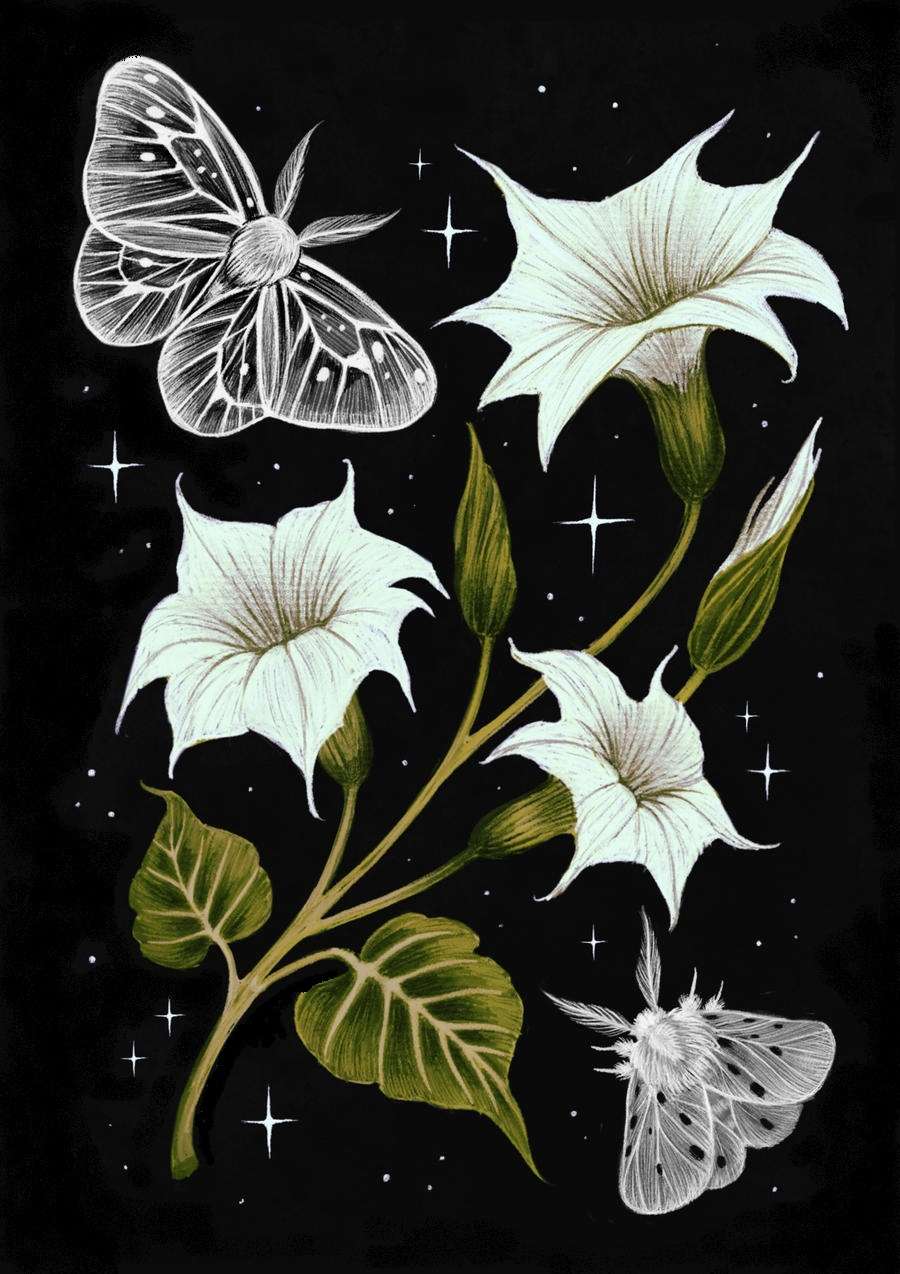
| Author Notes |
sentient - having the power of perception by the senses: humans, plants, animals, birds, fish. Scientists are divided on whether insects are sentient beings, most tend to think they are.
moonflowers - are a species of night-blooming morning glory, native to tropical and subtropical regions. HAIKU is a Japanese short unrhymed poem that uses imagistic language to express the essence of a deeply felt moment in time. It resonates on a deeper level, leaving the reader enlightened and making an insightful connection between the top two lines and the last one, called the SATORI. It originated in the thirteenth century and was mastered a century later by Matsuo Basho. HAIKU uses a dash to pause before the SATORI.. Haiku is about nature and it alludes to a season of the year. The haiku is written from an observer's point of view. In Japan, haiku is written in 17 syllables and three lines ( 5/7/5) but in English is 17 syllables OR LESS because English syllables are longer than Japanese syllables. Avoid capitalization (except proper names) and punctuation. Avoid metaphor and personification, you write about what you can SEE. === click here to read Haiku Society of America, HAIKU EXAMPLES === click here to read Haiku Society of America HAIKU RULES === click here to read why is 5/7/5 OR LESS rule === Modern Haiku Thank you very much for taking the time to read and review my poem. Gypsy "Poetry heals the wounds inflicted by reason." - Novalis pictures from pinterest |
![]()
By Gypsy Blue Rose

| Author Note: | rules and poem in black font in author notes |
ruby sunset
tucks me in at the end of day —
wind whispers goodnight

| Author Notes |
ruby sunset
tucks me in at the end of day - wind whispers goodnight HAIKU is a Japanese short unrhymed poem that uses imagistic language to express the essence of a deeply felt moment in time. It resonates on a deeper level, leaving the reader enlightened and making an insightful connection between the top two lines and the last one, called the SATORI. It originated in the thirteenth century and was mastered a century later by Matsuo Basho. HAIKU uses a dash to pause before the SATORI.. Haiku is about nature and it alludes to a season of the year. The haiku is written from an observer's point of view. In Japan, haiku is written in 17 syllables and three lines ( 5/7/5) but in English is 17 syllables OR LESS because English syllables are longer than Japanese syllables. Avoid capitalization (except proper names) and punctuation. Avoid metaphor and personification, you write about what you can SEE. === click here to read Haiku Society of America, HAIKU EXAMPLES === click here to read Haiku Society of America HAIKU RULES === click here to read why is 5/7/5 OR LESS rule === Modern Haiku Thank you very much for taking the time to read and review my poem. Gypsy "Poetry heals the wounds inflicted by reason." - Novalis picture from pinterest |
![]()
By Gypsy Blue Rose

| Author Note: | For Rules, Please Read My Author Notes |

| Author Notes |
HAIKU is a Japanese short unrhymed poem that uses imagistic language to express the essence of a deeply felt moment in time. It resonates on a deeper level, leaving the reader enlightened and making an insightful connection between the top two lines and the last one, called the SATORI. It originated in the thirteenth century and was mastered a century later by Matsuo Basho. HAIKU uses a dash to pause before the SATORI.. Haiku is about nature and it alludes to a season of the year. The haiku is written from an observer's point of view. In Japan, haiku is written in 17 syllables and three lines ( 5/7/5) but in English is 17 syllables OR LESS because English syllables are longer than Japanese syllables. Avoid capitalization (except proper names) and punctuation. Avoid metaphor and personification, you write about what you can SEE. === click here to read Haiku Society of America, HAIKU EXAMPLES === click here to read Haiku Society of America HAIKU RULES === click here to read why is 5/7/5 OR LESS rule === Modern Haiku
Thank you very much for taking the time to read and review my poem. Gypsy "The poet waits quietly to paint the unsaid." Atticus picture from google public domain |
![]()
By Gypsy Blue Rose

| Author Note: | For Rules, Please Read My Author Notes |
luminous night
at the white tulip field —
full moon inside the flowers

| Author Notes |
HAIKU is a Japanese short unrhymed poem that uses imagistic language to express the essence of a deeply felt moment in time. It resonates on a deeper level, leaving the reader enlightened and making an insightful connection between the top two lines and the last one, called the SATORI. It originated in the thirteenth century and was mastered a century later by Matsuo Basho. HAIKU uses a dash to pause before the SATORI.. Haiku is about nature and it alludes to a season of the year. The haiku is written from an observer's point of view. In Japan, haiku is written in 17 syllables and three lines ( 5/7/5) but in English is 17 syllables OR LESS because English syllables are longer than Japanese syllables. Avoid capitalization (except proper names) and punctuation. Avoid metaphor and personification, you write about what you can SEE. === click here to read Haiku Society of America, HAIKU EXAMPLES === click here to read Haiku Society of America HAIKU RULES === click here to read why is 5/7/5 OR LESS rule === Modern Haiku
Thank you very much for taking the time to read and review my poem. Gypsy "Poetry heals the wounds inflicted by reason." - Novalis pictures from pinterest |
![]()
By Gypsy Blue Rose
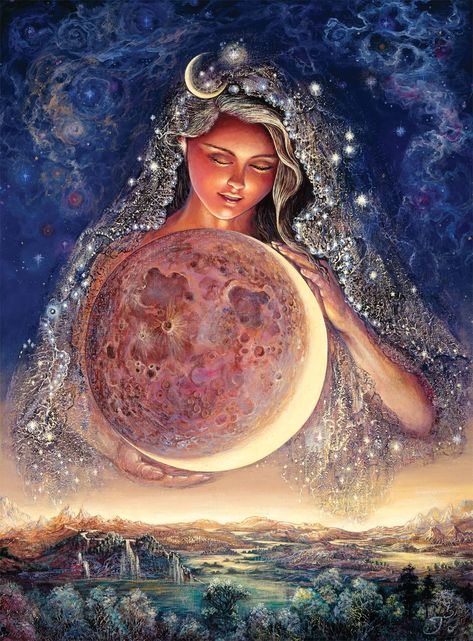
| Author Note: | Coquette = a woman who flirts lightheartedly with men |
coquette Venus
kisses rivers full of stars —
match made in heaven

| Author Notes |
"match made in heaven" is a famous phrase meaning a perfect couple.
Zen is the philosophy that we are all interconnected in nature, including humans. Separation is a source of fear and suffering. In this haiku, I use personification to show the connection between Venus, Earth, Rivers, and Stars. With this kind of haiku, you can use all the poetic devices, unlike regular haiku. ZEN HAIKU is a Japanese short unrhymed poem that uses imagistic language to express the essence of a deeply felt moment in time. It resonates on a deeper level, leaving the reader enlightened and making an insightful connection between the top two lines and the last one, called the SATORI. It originated in the thirteenth century and was mastered a century later by Matsuo Basho. HAIKU uses a dash to pause before the SATORI.. Haiku is about nature and it alludes to a season of the year. The haiku is written from an observer's point of view. In Japan, haiku is written in 17 syllables and three lines ( 5/7/5) but in English is 17 syllables OR LESS because English syllables are longer than Japanese syllables. Avoid capitalization (except proper names) and punctuation. Avoid metaphor and personification, you write about what you can SEE. === click here to read Haiku Society of America, HAIKU EXAMPLES === click here to read Haiku Society of America HAIKU RULES === click here to read why is 5/7/5 OR LESS rule === Modern Haiku Thank you very much. I appreciate your kind and helpful review. Gypsy hugs "Learn the rules like a pro, so you can break them like an artist." - Picasso pictures from pinterest |
![]()
By Gypsy Blue Rose

| Author Note: | For Rules, Please Read My Author Notes |
dusk’s stardust drifts
over darkening foothills —
still warm from the sunset

| Author Notes |
HAIKU is a Japanese short unrhymed poem that uses imagistic language to express the essence of a deeply felt moment in time. It resonates on a deeper level, leaving the reader enlightened and making an insightful connection between the top two lines and the last one, called the SATORI. It originated in the thirteenth century and was mastered a century later by Matsuo Basho. HAIKU uses a dash to pause before the SATORI.. Haiku is about nature and it alludes to a season of the year. The haiku is written from an observer's point of view. In Japan, haiku is written in 17 syllables and three lines ( 5/7/5) but in English is 17 syllables OR LESS because English syllables are longer than Japanese syllables. Avoid capitalization (except proper names) and punctuation. Avoid metaphor and personification, you write about what you can SEE. === click here to read Haiku Society of America, HAIKU EXAMPLES === click here to read Haiku Society of America HAIKU RULES === click here to read why is 5/7/5 OR LESS rule === Modern Haiku
Thank you very much for taking the time to read and review my poem. Gypsy "Poetry heals the wounds inflicted by reason." - Novalis picture from pinterest |
![]()
By Gypsy Blue Rose
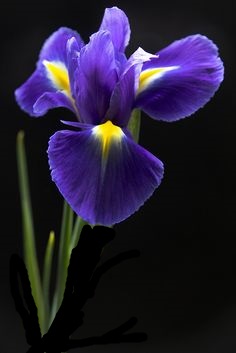
| Author Note: | The Iris Flower Symbolizes Hope |
in a world of pain
flowers still grow—
field of irises

| Author Notes |
HAIKU is a Japanese short unrhymed poem that uses imagistic language to express the essence of a deeply felt moment in time. It resonates on a deeper level, leaving the reader enlightened and making an insightful connection between the top two lines and the last one, called the SATORI. It originated in the thirteenth century and was mastered a century later by Matsuo Basho. HAIKU uses a dash to pause before the SATORI.. Haiku is about nature and it alludes to a season of the year. The haiku is written from an observer's point of view. In Japan, haiku is written in 17 syllables and three lines ( 5/7/5) but in English is 17 syllables OR LESS because English syllables are longer than Japanese syllables. Avoid capitalization (except proper names) and punctuation. Avoid metaphor and personification, you write about what you can SEE. === click here to read Haiku Society of America, HAIKU EXAMPLES === click here to read Haiku Society of America HAIKU RULES === click here to read why is 5/7/5 OR LESS rule === Modern Haiku
Thank you very much for taking the time to read and review my poem. Gypsy "Poetry heals the wounds inflicted by reason." - Novalis pictures from pinterest |
![]()
By Gypsy Blue Rose

| Author Note: | For Rules, Please Read My Author Notes |
dew drops drip
down dove’s feathers
dusting off —
last rays of dawn

| Author Notes |
Modern Haiku is a brief Japanese poem that epitomizes a single moment. The form is 17 syllables or LESS, in 1 to 4 lines as brief as possible. It doesn't have to follow the 5/7/5 pattern because Japanese and English syllables are not the same. It uses the juxtaposition of two concrete images, often a universal condition of nature and a particular aspect of human experience, in a way that prompts the reader to make an insightful connection between the two. The best haiku alludes to the season of the year. Poetic devices may be used. The haiku is written from an observer's point of view.. -- modern haiku rules -- modern haiku examples If you have any haiku questions, don't hesitate to contact me.
Thank you very much for taking the time to read and review my poem. Gypsy "Poetry heals the wounds inflicted by reason." - Novalis pictures by Eric Sweet |
![]()
By Gypsy Blue Rose

| Author Note: | Haiku rules in author notes |
| Author Notes |
Haiku is a form of Japanese poetry made of short, unrhymed lines that evoke natural imagery. The haiku gives a moment of insight based on observation.
Japanese haiku are written in 3 lines with 5/7/5 syllables form. In English is 3 lines with 17 syllables OR LESS due to the difference between Japanese and English syllables. haiku contains two separate parts: A section that creates an image (often the first two lines, but not always) Then another section which is different but connected√???√??√?¬¢??perhaps suggesting an interpretation of the first image, perhaps suggesting a contrast. Haiku should be clear and direct, with strong images in a compact and concise manner. for haiku rules click here - modern Haiku rules Thank you for reading and reviewing my poem. Gypsy "Poetry heals the wounds inflicted by reason" -- Novalis |
![]()
By Gypsy Blue Rose

| Author Note: | For Rules, Please Read My Author Notes |

| Author Notes |
The bottom art is a picture of moonflowers. both pictures from Pinterest
ZEN philosophy teaches that our suffering arises from a sense of separation, from feeling alone and afraid. The practice of zen buddhism is a way of dissolving the feeling of separation by experiencing the unity of our own nature and the nature of everything around us. As haiku master Matsuo Bashe wrote, "Learn about the pine, from the pine, and about bamboo from the bamboo". The poet should write about the thing in nature as if the poet writes about himself or herself when the poet and the thing in nature becomes one". HAIKU is a Japanese short unrhymed poem that uses imagistic language to express the essence of a deeply felt moment in time. It resonates on a deeper level, leaving the reader enlightened and making an insightful connection between the top two lines and the last one, called the SATORI. It originated in the thirteenth century and was mastered a century later by Matsuo Basho. HAIKU uses a dash to pause before the SATORI.. Haiku is about nature and it alludes to a season of the year. The haiku is written from an observer's point of view. In Japan, haiku is written in 17 syllables and three lines ( 5/7/5) but in English is 17 syllables OR LESS because English syllables are longer than Japanese syllables. Avoid capitalization (except proper names) and punctuation. Avoid metaphor and personification, you write about what you can SEE. === click here to read Haiku Society of America, HAIKU EXAMPLES === click here to read Haiku Society of America HAIKU RULES === click here to read why is 5/7/5 OR LESS rule === Modern Haiku Thank you very much for taking the time to read and review my poem. Gypsy "Poetry heals the wounds inflicted by reason." - Novalis |
![]()
By Gypsy Blue Rose

| Author Note: | poem in black font in my author notes |

| Author Notes |
you and me
tangled in tangerine sunset dusted with golden dusk Tangerine Dream is the name of a German music band, no relation to the poem SENRYU is a Japanese poem with a title that deepens its meaning. Senryu is similar to Haiku but It's about human nature and it doesn't include a season word (kigo). It's written in three lines with 17 syllables or less. These poems use a pause usually marked by a dash before the satori (an insightful twist to ponder). Alliteration and metaphor are okay. Never rhymes. the em-dash ( -- ) is used to emphasize an interruption in speech before the satori. for more information click here collection of senryu ***** The Haiku Foundation of America Thank you very much for taking the time to read and review my poem. Gypsy "The poet waits quietly to paint the unsaid." Atticus picture from pinterest |
![]()
By Gypsy Blue Rose

| Author Note: | For Rules, Please Read My Author Notes |

| Author Notes |
"You cannot protect yourself from sadness without protecting yourself from happiness." - Jonathan Safran Foer
HAIKU is a Japanese short unrhymed poem that uses imagistic language to express the essence of a deeply felt moment in time. It resonates on a deeper level, leaving the reader enlightened and making an insightful connection between the top two lines and the last one, called the SATORI. It originated in the thirteenth century and was mastered a century later by Matsuo Basho. HAIKU uses a dash to pause before the SATORI.. Haiku is about nature and it alludes to a season of the year. The haiku is written from an observer's point of view. In Japan, haiku is written in 17 syllables and three lines ( 5/7/5) but in English is 17 syllables OR LESS because English syllables are longer than Japanese syllables. Avoid capitalization (except proper names) and punctuation. Avoid metaphor and personification, you write about what you can SEE. === click here to read Haiku Society of America, HAIKU EXAMPLES === click here to read Haiku Society of America HAIKU RULES === click here to read why is 5/7/5 OR LESS rule === Modern Haiku Thank you very much for taking the time to read and review my poem. Gypsy "Poetry heals the wounds inflicted by reason." - Novalis |
![]()
By Gypsy Blue Rose

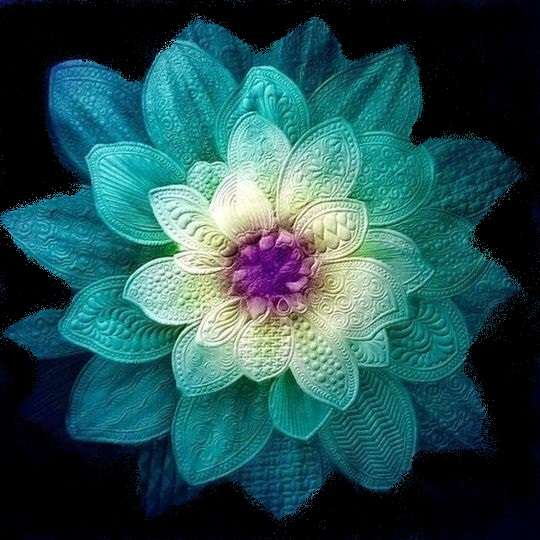
| Author Notes |
"She will blaze through you like a gypsy wildfire. Igniting your soul and dancing in its flames. And when she is gone, the smell of her smoke will be the only thing left to soothe you." -- Nicole Lyons
HAIKU is a Japanese short unrhymed poem that uses imagistic language to express the essence of a deeply felt moment in time. It resonates on a deeper level, leaving the reader enlightened and making an insightful connection between the top two lines and the last one, called the SATORI. It originated in the thirteenth century and was mastered a century later by Matsuo Basho. HAIKU uses a dash to pause before the SATORI.. Haiku is about nature and it alludes to a season of the year. The haiku is written from an observer's point of view. In Japan, haiku is written in 17 syllables and three lines ( 5/7/5) but in English is 17 syllables OR LESS because English syllables are longer than Japanese syllables. Avoid capitalization (except proper names) and punctuation. Avoid metaphor and personification, you write about what you can SEE. === click here to read Haiku Society of America, HAIKU EXAMPLES === click here to read Haiku Society of America HAIKU RULES === click here to read why is 5/7/5 OR LESS rule === Modern Haiku Thank you very much for taking the time to read and review my poem. Gypsy "Poetry heals the wounds inflicted by reason." - Novalis |
![]()
By Gypsy Blue Rose

tired flower vendor
walks home with the rare blue moon —
basket full of night

| Author Notes |
Next blue moon on August 30, 2023. The blue moon is rare, thus the phrase, "once in a blue moon"
HAIKU is a Japanese short unrhymed poem that uses imagistic language to express the essence of a deeply felt moment in time. It resonates on a deeper level, leaving the reader enlightened and making an insightful connection between the top two lines and the last one, called the SATORI. HAIKU uses a dash to pause before the SATORI. It's about nature and it alludes to a season of the year. In Japan, haiku is written in 17 syllables and three lines ( 5/7/5) but in English is 17 syllables OR LESS because English syllables are longer than Japanese syllables. Avoid capitalization (except proper names) and punctuation. Avoid metaphor and personification, you write about what you can SEE. === click here to read Haiku Society of America, HAIKU EXAMPLES === click here to read Haiku Society of America HAIKU RULES === click here to read why is 5/7/5 OR LESS rule === Modern Haiku Thank you very much for taking the time to read and review my poem. Gypsy pictures from pinterest |
![]()
By Gypsy Blue Rose

| Author Note: | For Rules, Please Read My Author Notes |

| Author Notes |
HAIKU is a Japanese short unrhymed poem that uses imagistic language to express the essence of a deeply felt moment in time. It resonates on a deeper level, leaving the reader enlightened and making an insightful connection between the top two lines and the last one, called the SATORI. It originated in the thirteenth century and was mastered a century later by Matsuo Basho. HAIKU uses a dash to pause before the SATORI.. Haiku is about nature and it alludes to a season of the year. The haiku is written from an observer's point of view. In Japan, haiku is written in 17 syllables and three lines ( 5/7/5) but in English is 17 syllables OR LESS because English syllables are longer than Japanese syllables. Avoid capitalization (except proper names) and punctuation. Avoid metaphor and personification, you write about what you can SEE. === click here to read Haiku Society of America, HAIKU EXAMPLES === click here to read Haiku Society of America HAIKU RULES === click here to read why is 5/7/5 OR LESS rule === Modern Haiku
Thank you very much for taking the time to read and review my poem. Gypsy "Poetry heals the wounds inflicted by reason." - Novalis picture from pinterest |
![]()
By Gypsy Blue Rose

| Author Note: | For Rules, Please Read My Author Notes |
stroll beneath the crescent moon—
in each tree
a clear night
| Author Notes |
In each tree a clear night is a zen concept. Everything is connected in nature.
Modern Haiku is a brief Japanese poem that epitomizes a single moment. The form is 17 syllables or LESS, in 1 to 4 lines as brief as possible. It doesn't have to follow the 5/7/5 pattern because Japanese and English syllables are not the same. It uses the juxtaposition of two concrete images, often a universal condition of nature and a particular aspect of human experience, in a way that prompts the reader to make an insightful connection between the two. The best haiku alludes to the season of the year. Poetic devices may be used. The haiku is written from an observer's point of view.. -- modern haiku rules -- modern haiku examples Thank you very much for taking the time to read and review my poem. Gypsy "Poetry heals the wounds inflicted by reason." - Novalis picture from pinterest |
![]()
By Gypsy Blue Rose

| Author Note: | For Rules, Please Read My Author Notes |
worm
scapes the raven beak—
falls into pelican’s bill

| Author Notes |
HAIKU is a Japanese short unrhymed poem that uses imagistic language to express the essence of a deeply felt moment in time. It resonates on a deeper level, leaving the reader enlightened and making an insightful connection between the top two lines and the last one, called the SATORI. It originated in the thirteenth century and was mastered a century later by Matsuo Basho. HAIKU uses a dash to pause before the SATORI.. Haiku is about nature and it alludes to a season of the year. The haiku is written from an observer's point of view. In Japan, haiku is written in 17 syllables and three lines ( 5/7/5) but in English is 17 syllables OR LESS because English syllables are longer than Japanese syllables. Avoid capitalization (except proper names) and punctuation. Avoid metaphor and personification, you write about what you can SEE. === click here to read Haiku Society of America, HAIKU EXAMPLES === click here to read Haiku Society of America HAIKU RULES === click here to read why is 5/7/5 OR LESS rule === Modern Haiku
Thank you very much for taking the time to read and review my poem. Gypsy "Poetry heals the wounds inflicted by reason." - Novalis picture from pinterest |
![]()
By Gypsy Blue Rose

| Author Note: | For Rules, Please Read My Author Notes |
widow at food store
looks yearningly —
at family size cheerios

| Author Notes |
SENRYU is a Japanese poem with a title that deepens its meaning. Senryu is similar to Haiku but It's about human nature and it doesn't include a season word (kigo). It's written in three lines with 17 syllables or less. These poems use a pause usually marked by a dash before the satori (an insightful twist to ponder). Alliteration and metaphor are okay. Never rhymes. the em-dash ( -- ) is used to emphasize an interruption in speech before the satori.
for more information click here collection of senryu ***** The Haiku Foundation of America Thank you very much for taking the time to read and review my poem. Gypsy "The poet waits quietly to paint the unsaid." Atticus |
![]()
By Gypsy Blue Rose
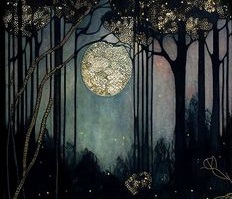
| Author Note: | For Rules, Please Read My Author Notes |

| Author Notes |
Lotus is an aquatic plant that symbolizes spiritual awakening, beauty, purity, love, or enlightenment.
Amorous = inclined or disposed to love, especially sexual love Thank you very much for taking the time to read and review my poem. Gypsy "Poetry heals the wounds inflicted by reason." - Novalis picture from pinterest |
![]()
By Gypsy Blue Rose

| Author Note: | For rules please see author notes |
| Author Notes |
4/6/5 syllables
Haiku is a form of Japanese poetry made of short, unrhymed lines that evoke natural imagery. The haiku gives a moment of insight based on observation. Japanese haiku are written in 3 lines with 5/7/5 syllables form. In English is 3 lines with 17 syllables OR LESS due to the difference between Japanese and English syllables. for haiku rules click here - modern Haiku rules Thank you for reading and reviewing my poem. Gypsy "Poetry heals the wounds inflicted by reason" -- Novalis |
![]()
By Gypsy Blue Rose
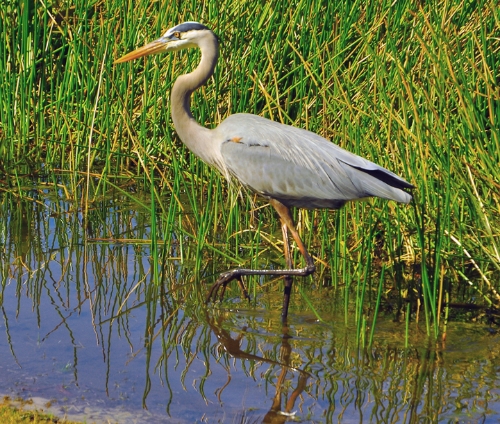

| Author Notes |
4/5/6 syllables
Siege is a group of herons Haiku is a form of Japanese poetry made of short, unrhymed lines that evoke natural imagery. The haiku gives a moment of insight based on observation. Japanese haiku are written in 3 lines with 5/7/5 syllables form. In English is 3 lines with 17 syllables OR LESS due to the difference between Japanese and English syllables. for haiku rules click here - modern Haiku rules Thank you for reading and reviewing my poem. Gypsy "Poetry heals the wounds inflicted by reason" -- Novalis |
![]()
By Gypsy Blue Rose

| Author Note: | Rules in author notes |
| Author Notes |
5/4/4 syllables
Haiku is a form of Japanese poetry made of short, unrhymed lines that evoke natural imagery. The haiku gives a moment of insight based on observation. Japanese haiku are written in 3 lines with 5/7/5 syllables form. In English is 3 lines with 17 syllables OR LESS due to the difference between Japanese and English syllables. for haiku rules click here - modern Haiku rules Thank you for reading and reviewing my poem. Gypsy "Poetry heals the wounds inflicted by reason" -- Novalis |
![]()
By Gypsy Blue Rose

| Author Note: | Rules in author notes |
branch and twig
endure winter—
through thick and thin

| Author Notes |
3/4/4 syllables
HAIKU is a Japanese short unrhymed poem that uses imagistic language to express the essence of a deeply felt moment in time. It resonates on a deeper level, leaving the reader enlightened and making an insightful connection between the top two lines and the last one, called the SATORI. It originated in the thirteenth century and was mastered a century later by Matsuo Basho. HAIKU uses a dash to pause before the SATORI.. Haiku is about nature and it alludes to a season of the year. The haiku is written from an observer's point of view. In Japan, haiku is written in 17 syllables and three lines ( 5/7/5) but in English is 17 syllables OR LESS because English syllables are longer than Japanese syllables. Avoid capitalization (except proper names) and punctuation. Avoid metaphor and personification, you write about what you can SEE. === click here to read Haiku Society of America, HAIKU EXAMPLES === click here to read Haiku Society of America HAIKU RULES === click here to read why is 5/7/5 OR LESS rule === Modern Haiku Thank you very much for taking the time to read and review my poem. Gypsy "having no destination, I am never lost" - Ikkyu picture from pinterest |
![]()
By Gypsy Blue Rose

meandering wind
plays with Kentucky bluegrass—
sweet nothings whisper
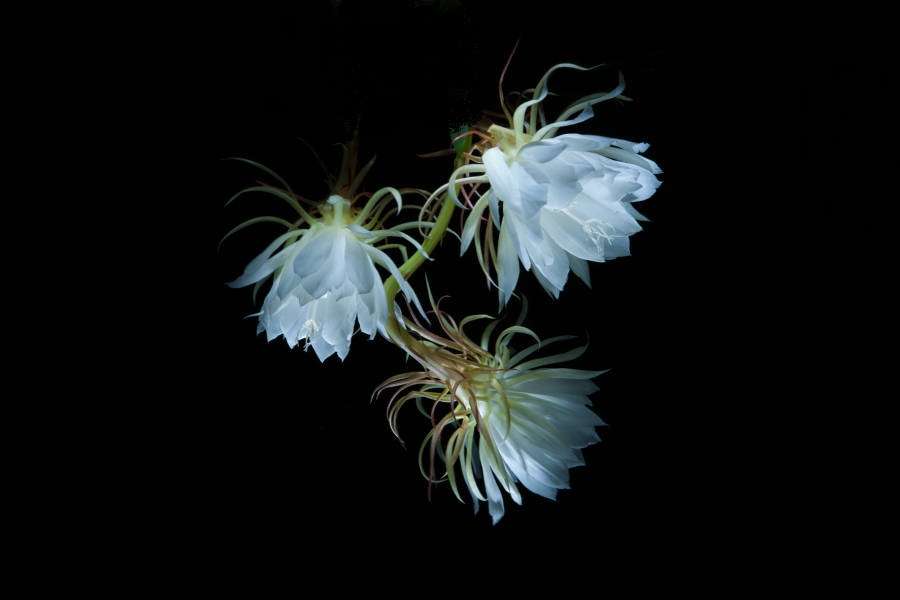
| Author Notes |
Kentucky bluegrass = is a type of grass
Bluegrass= a type of country music sweet nothings = loving words sweet nothin's - a song, 1959 by Brenda Lee- HAIKU is a Japanese short unrhymed poem that uses imagistic language to express the essence of a deeply felt moment in time. It resonates on a deeper level, leaving the reader enlightened and making an insightful connection between the top two lines and the last one, called the SATORI. It originated in the thirteenth century and was mastered a century later by Matsuo Basho. HAIKU uses a dash to pause before the SATORI.. Haiku is about nature and it alludes to a season of the year. The haiku is written from an observer's point of view. In Japan, haiku is written in 17 syllables and three lines ( 5/7/5) but in English is 17 syllables OR LESS because English syllables are longer than Japanese syllables. Avoid capitalization (except proper names) and punctuation. Avoid metaphor and personification, you write about what you can SEE. === click here to read Haiku Society of America, HAIKU EXAMPLES === click here to read Haiku Society of America HAIKU RULES === click here to read why is 5/7/5 OR LESS rule === Modern Haiku Thank you very much for taking the time to read and review my poem. Gypsy "Poetry heals the wounds inflicted by reason." - Novalis pictures from pinterest |
![]()
By Gypsy Blue Rose

| Author Note: | Haiku in black font and rules in author notes |
| Author Notes |
spring drizzle
plays a tune on the roof-- poorman's night at the symphony 3 -6- 2 -6 = 17 syllables Modern haiku is written in one to four lines with 17 or less syllables. modern Haiku rules Haiku is a form of Japanese poetry made of short, unrhymed lines that evoke natural imagery. The haiku gives a moment of insight based on observation. Thank you very much for reading and reviewing my poem. Gypsy |
![]()
By Gypsy Blue Rose
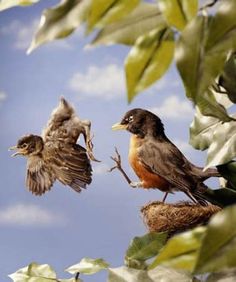
| Author Note: | For Rules, Please Read My Author Notes |
hatchling outgrows
the nest and is ready to fly —
leap of faith

| Author Notes |
4/8/3 syllables
When birds are born they are mostly helpless and rely on their parents to feed them and keep them warm. They soon open their eyes and their downy feathers disappear to be replaced with their flight feathers. It takes from 10 days to 3 weeks. HAIKU is a Japanese short unrhymed poem that uses imagistic language to express the essence of a deeply felt moment in time. It resonates on a deeper level, leaving the reader enlightened and making an insightful connection between the top two lines and the last one, called the SATORI. It originated in the thirteenth century and was mastered a century later by Matsuo Basho. HAIKU uses a dash to pause before the SATORI.. Haiku is about nature and it alludes to a season of the year. The haiku is written from an observer's point of view. In Japan, haiku is written in 17 syllables and three lines ( 5/7/5) but in English is 17 syllables OR LESS because English syllables are longer than Japanese syllables. Avoid capitalization (except proper names) and punctuation. Avoid metaphor and personification, you write about what you can SEE. === click here to read Haiku Society of America, HAIKU EXAMPLES === click here to read Haiku Society of America HAIKU RULES === click here to read why is 5/7/5 OR LESS rule === Modern Haiku Thank you very much for taking the time to read and review my poem. Gypsy "Poetry heals the wounds inflicted by reason." - Novalis |
![]()
By Gypsy Blue Rose

| Author Note: | haiku in black font and rules are in my Author Notes |

| Author Notes |
4/7/6 syllables
crisp autumn wind waves goodbye to strawberries- farmer's life must end too HAIKU is a Japanese short unrhymed poem that uses imagistic language to express the essence of a deeply felt moment in time. It resonates on a deeper level, leaving the reader enlightened and making an insightful connection between the top two lines and the last one, called the SATORI. It originated in the thirteenth century and was mastered a century later by Matsuo Basho. HAIKU uses a dash to pause before the SATORI.. Haiku is about nature and it alludes to a season of the year. The haiku is written from an observer's point of view. In Japan, haiku is written in 17 syllables and three lines ( 5/7/5) but in English is 17 syllables OR LESS because English syllables are longer than Japanese syllables. Avoid capitalization (except proper names) and punctuation. Avoid metaphor and personification, you write about what you can SEE. === click here to read Haiku Society of America, HAIKU EXAMPLES === click here to read Haiku Society of America HAIKU RULES === click here to read why is 5/7/5 OR LESS rule Thank you very much for taking the time to read and review my poem. Gypsy "Poetry heals the wounds inflicted by reason." - Novalis picture from pinterest |
![]()
By Gypsy Blue Rose

| Author Note: | For Rules, Please Read My Author Notes |

| Author Notes |
3/7/4 syllables
It's always sad when the nets are empty and the fishermen have to return home with nothing to show for their long day of hard labor. HAIKU is a Japanese short unrhymed poem that uses imagistic language to express the essence of a deeply felt moment in time. It resonates on a deeper level, leaving the reader enlightened and making an insightful connection between the top two lines and the last one, called the SATORI. It originated in the thirteenth century and was mastered a century later by Matsuo Basho. HAIKU uses a dash to pause before the SATORI.. Haiku is about nature and it alludes to a season of the year. The haiku is written from an observer's point of view. In Japan, haiku is written in 17 syllables and three lines ( 5/7/5) but in English is 17 syllables OR LESS because English syllables are longer than Japanese syllables. Avoid capitalization (except proper names) and punctuation. Avoid metaphor and personification, you write about what you can SEE. === click here to read Haiku Society of America, HAIKU EXAMPLES === click here to read Haiku Society of America HAIKU RULES === click here to read why is 5/7/5 OR LESS rule === Modern Haiku Thank you very much for taking the time to read and review my poem. Gypsy "Poetry heals the wounds inflicted by reason." - Novalis |
![]()
By Gypsy Blue Rose

| Author Note: | If You Would Like To Join the Haiku Club, please check my author notes |

| Author Notes |
When I die, I want my ashes scattered in the wind
5/6/6 syllables. This week our event in the haiku club is to write a Full Moon Haiku. I chose the Harvest Moon. September: Harvest Moon Technically, the Harvest Moon is the Full Moon closest to the September equinox. Most years, it's in September, but around every three years, it falls in October. The September equinox is the moment the Sun crosses the celestial equator (an imaginary line in the sky above Earth's equator from north to south. In Los Angeles, California, USA: Friday, September 22, 2023, at 11:50 pm PDT, almanac full moon names If you would like to join the haiku club click here everybody is welcome from beginners to advanced skills. Thank you for reading my poem, Gypsy |
![]()
By Gypsy Blue Rose

| Author Note: | Rules in author notes |
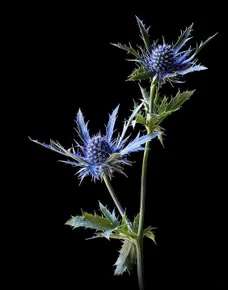
| Author Notes |
The Cold Moon is the full moon in December click here if you want to see the moon almanac
This week we are writing full moon haiku in the Haiku Club. click here if you want to check the club 3/6/5/3 = 17 syllables Modern Haiku is a brief Japanese poem that epitomizes a single moment. The form is 17 syllables or LESS, in 1 to 4 lines as brief as possible. It doesn't have to follow the 5/7/5 pattern because Japanese and English syllables are not the same. It uses the juxtaposition of two concrete images, often a universal condition of nature and a particular aspect of human experience, in a way that prompts the reader to make an insightful connection between the two. The best haiku alludes to the season of the year. Poetic devices may be used. The haiku is written from an observer's point of view.. -- modern haiku rules -- modern haiku examples If you have any haiku questions, don't hesitate to contact me. Thank you very much for taking the time to read and review my poem. Gypsy "Poetry heals the wounds inflicted by reason." - Novalis pictures from pinterest and google public domain |
![]()
By Gypsy Blue Rose
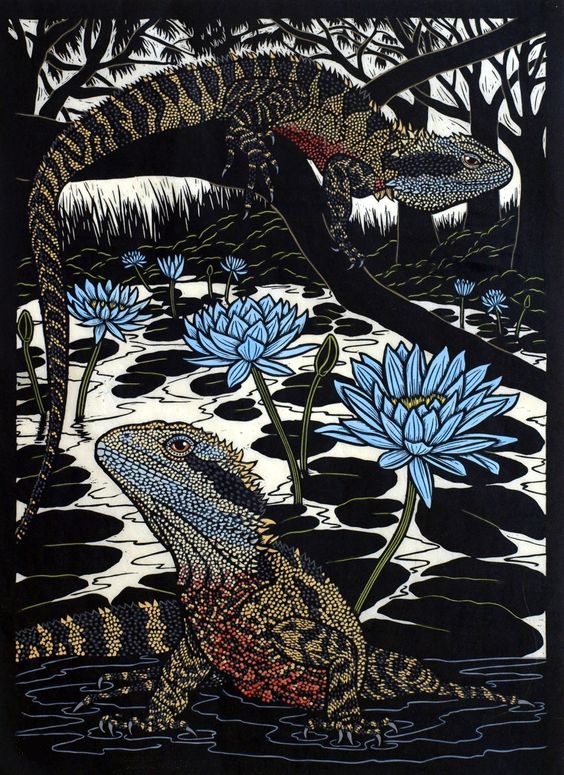
| Author Note: | For Nippy |

| Author Notes |
Dedicated to Nippy, a very special Australian Water Dragon
I am not sure if the top picture is an Australian Water Dragon or an iguana, they are similar but not the same. I think the bottom picture is an Australian water dragon. I looked for a long time for the right picture and I fell in love with the pictures I used. My apologies if it's not the right lizard. The Australian water dragon is native to eastern Australia from Victoria northwards to Queensland. - click here if you want to read more HAIKU is a Japanese short unrhymed poem that uses imagistic language to express the essence of a deeply felt moment in time. It resonates on a deeper level, leaving the reader enlightened and making an insightful connection between the top two lines and the last one, called the SATORI. It originated in the thirteenth century and was mastered a century later by Matsuo Basho. HAIKU uses a dash to pause before the SATORI.. Haiku is about nature and it alludes to a season of the year. The haiku is written from an observer's point of view. In Japan, haiku is written in 17 syllables and three lines ( 5/7/5) but in English is 17 syllables OR LESS because English syllables are longer than Japanese syllables. Avoid capitalization (except proper names) and punctuation. Avoid metaphor and personification, you write about what you can SEE. === click here to read Haiku Society of America, HAIKU EXAMPLES === click here to read Haiku Society of America HAIKU RULES === click here to read why is 5/7/5 OR LESS rule Thank you very much for taking the time to read and review my poem. Gypsy "Poetry heals the wounds inflicted by reason." - Novalis pictures from pinterest |
![]()
By Gypsy Blue Rose

| Author Note: | For Rules, Please Read My Author Notes |
moon on the lake
trembles with dangerous waves
of the crocodile

| Author Notes |
HAIKU is a Japanese short unrhymed poem that uses imagistic language to express the essence of a deeply felt moment in time. It resonates on a deeper level, leaving the reader enlightened and making an insightful connection between the top two lines and the last one, called the SATORI. It originated in the thirteenth century and was mastered a century later by Matsuo Basho. HAIKU uses a dash to pause before the SATORI.. Haiku is about nature and it alludes to a season of the year. The haiku is written from an observer's point of view. In Japan, haiku is written in 17 syllables and three lines ( 5/7/5) but in English is 17 syllables OR LESS because English syllables are longer than Japanese syllables. Avoid capitalization (except proper names) and punctuation. Avoid metaphor and personification, you write about what you can SEE. === click here to read Haiku Society of America, HAIKU EXAMPLES === click here to read Haiku Society of America HAIKU RULES === click here to read why is 5/7/5 OR LESS rule === Modern Haiku
Thank you very much for taking the time to read and review my poem. Gypsy "Poetry heals the wounds inflicted by reason." - Novalis |
![]()
By Gypsy Blue Rose
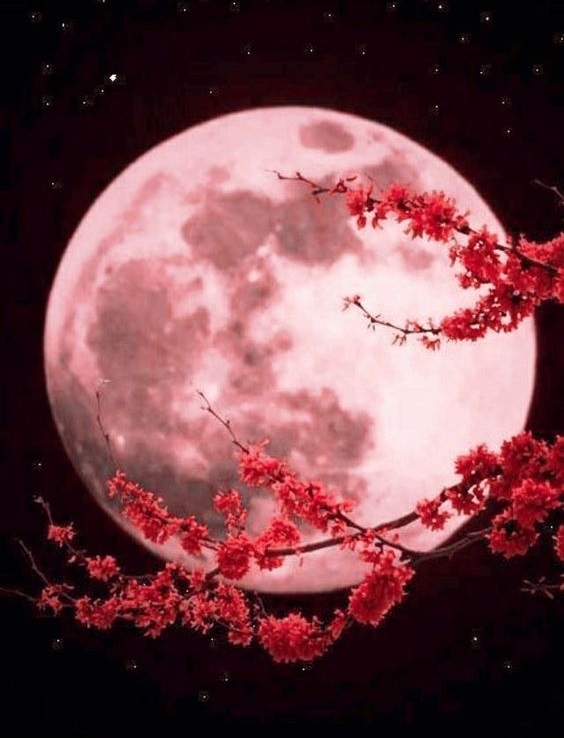
| Author Note: | For Rules, Please Read My Author Notes |

| Author Notes |
April has the Full Pink Moon, from the pink phlox wildflowers that bloom in North America in the early spring.
the bottom picture is a pink phlox flower HAIKU is a Japanese short unrhymed poem that uses imagistic language to express the essence of a deeply felt moment in time. It resonates on a deeper level, leaving the reader enlightened and making an insightful connection between the top two lines and the last one, called the SATORI. It originated in the thirteenth century and was mastered a century later by Matsuo Basho. HAIKU uses a dash to pause before the SATORI.. Haiku is about nature and it alludes to a season of the year. The haiku is written from an observer's point of view. In Japan, haiku is written in 17 syllables and three lines ( 5/7/5) but in English is 17 syllables OR LESS because English syllables are longer than Japanese syllables. Avoid capitalization (except proper names) and punctuation. Avoid metaphor and personification, you write about what you can SEE. === click here to read Haiku Society of America, HAIKU EXAMPLES === click here to read Haiku Society of America HAIKU RULES === click here to read why is 5/7/5 OR LESS rule === Modern Haiku Thank you very much for taking the time to read and review my poem. Gypsy "Poetry heals the wounds inflicted by reason." - Novalis pictures from pinterest |
![]()
By Gypsy Blue Rose
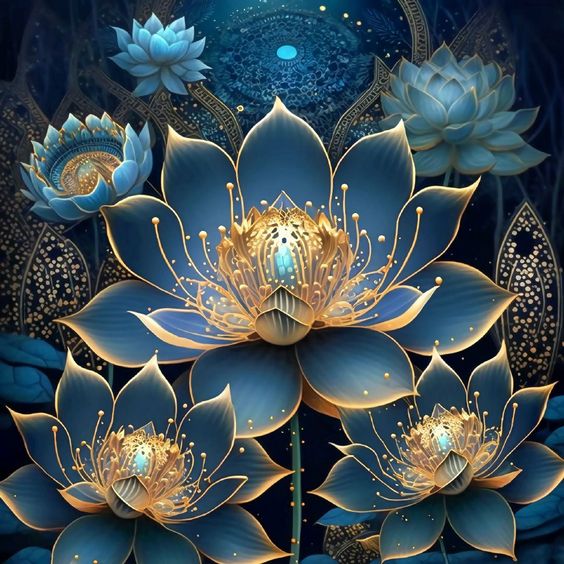
| Author Note: | Dedicated to my Children |
the love between us
is a radiant lotus flower—
in the pond of life

| Author Notes |
Haiku dedicated to my children
HAIKU is a Japanese short unrhymed poem that uses imagistic language to express the essence of a deeply felt moment in time. It resonates on a deeper level, leaving the reader enlightened and making an insightful connection between the top two lines and the last one, called the SATORI. It originated in the thirteenth century and was mastered a century later by Matsuo Basho. HAIKU uses a dash to pause before the SATORI.. Haiku is about nature and it alludes to a season of the year. The haiku is written from an observer's point of view. In Japan, haiku is written in 17 syllables and three lines ( 5/7/5) but in English is 17 syllables OR LESS because English syllables are longer than Japanese syllables. Avoid capitalization (except proper names) and punctuation. Avoid metaphor and personification, you write about what you can SEE. === click here to read Haiku Society of America, HAIKU EXAMPLES === click here to read Haiku Society of America HAIKU RULES === click here to read why is 5/7/5 OR LESS rule === Modern Haiku Thank you very much for taking the time to read and review my poem. Gypsy "Poetry heals the wounds inflicted by reason." - Novalis pictures from pinterest |
![]()
By Gypsy Blue Rose

| Author Note: | For Dean |

| Author Notes |
I woke up in the middle of the night and this poem came to mind.
Getting ready for Halloween, another creepy poem ... hehehe. I used a senryu suite and one line refrain SENRYU is a Japanese poem with a title that deepens its meaning. Senryu is similar to Haiku but It's about human nature and it doesn't include a season word (kigo). It's written in three lines with 17 syllables or less. These poems use a pause usually marked by a dash before the satori (an insightful twist to ponder). Alliteration and metaphor are okay. Never rhymes. the em-dash ( -- ) is used to emphasize an interruption in speech before the satori. for more information click here collection of senryu ***** The Haiku Foundation of America Thank you very much for taking the time to read and review my poem. Gypsy pictures from pinterest Gypsy |
![]()
By Gypsy Blue Rose

the forgotten moth
dying in the air-tight jar —
sick child pulls oxygen tank

| Author Notes |
KATAUTA is an unrhymed 8th-century Japanese poem consisting of 19 syllables with a 5/7/7 pattern. A pair of katauta is called a sedoka. The form was used for poems addressed to a lover like tanka. click here for more info
|
![]()
By Gypsy Blue Rose
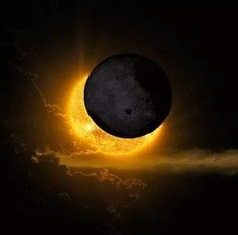
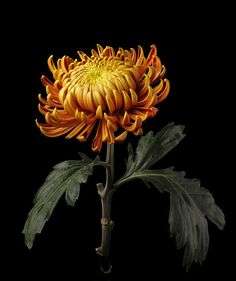
| Author Notes |
2/6/7 syllables
HAIKU is a Japanese short unrhymed poem that uses imagistic language to express the essence of a deeply felt moment in time. It resonates on a deeper level, leaving the reader enlightened and making an insightful connection between the top two lines and the last one, called the SATORI. It originated in the thirteenth century and was mastered a century later by Matsuo Basho. HAIKU uses a dash to pause before the SATORI.. Haiku is about nature and it alludes to a season of the year. The haiku is written from an observer's point of view. In Japan, haiku is written in 17 syllables and three lines ( 5/7/5) but in English is 17 syllables OR LESS because English syllables are longer than Japanese syllables. Avoid capitalization (except proper names) and punctuation. Avoid metaphor and personification, you write about what you can SEE. === click here to read Haiku Society of America, HAIKU EXAMPLES === click here to read Haiku Society of America HAIKU RULES === click here to read why is 5/7/5 OR LESS rule === Modern Haiku Thank you very much for taking the time to read and review my poem. Gypsy "Poetry heals the wounds inflicted by reason." - Novalis |
![]()
By Gypsy Blue Rose

while I sleep,
the starry sky’s canopy
rests over the calm sea

| Author Notes |
3/7/6 syllables
HAIKU is a Japanese short unrhymed poem that uses imagistic language to express the essence of a deeply felt moment in time. It resonates on a deeper level, leaving the reader enlightened and making an insightful connection between the top two lines and the last one, called the SATORI. It originated in the thirteenth century and was mastered a century later by Matsuo Basho. HAIKU uses a dash to pause before the SATORI.. Haiku is about nature and it alludes to a season of the year. The haiku is written from an observer's point of view. In Japan, haiku is written in 17 syllables and three lines ( 5/7/5) but in English is 17 syllables OR LESS because English syllables are longer than Japanese syllables. Avoid capitalization (except proper names) and punctuation. Avoid metaphor and personification, you write about what you can SEE. === click here to read Haiku Society of America, HAIKU EXAMPLES === click here to read Haiku Society of America HAIKU RULES === click here to read why is 5/7/5 OR LESS rule === Modern Haiku Thank you very much for taking the time to read and review my poem. Gypsy "Poetry heals the wounds inflicted by reason." - Novalis pictures from pinterest |
![]()
By Gypsy Blue Rose

| Author Notes |
Haiku is a form of Japanese poetry made of short, unrhymed lines that evoke natural imagery. The haiku gives a moment of insight based on observation.
Japanese haiku are written in 3 lines with 5/7/5 syllables form. In English is 3 lines with 17 syllables OR LESS due to the difference between Japanese and English syllables. for haiku rules click here - modern Haiku rules Thank you for reading and reviewing my poem. Gypsy "Poetry heals the wounds inflicted by reason" -- Novalis |
![]()
By Gypsy Blue Rose

| Author Note: | For Rules, Please Read My Author Notes |
end of day—
golden dusk descends
in her amber eyes

| Author Notes |
HAIKU is a Japanese short unrhymed poem that uses imagistic language to express the essence of a deeply felt moment in time. It resonates on a deeper level, leaving the reader enlightened and making an insightful connection between the top two lines and the last one, called the SATORI. It originated in the thirteenth century and was mastered a century later by Matsuo Basho. HAIKU uses a dash to pause before the SATORI.. Haiku is about nature and it alludes to a season of the year. The haiku is written from an observer's point of view. In Japan, haiku is written in 17 syllables and three lines ( 5/7/5) but in English is 17 syllables OR LESS because English syllables are longer than Japanese syllables. Avoid capitalization (except proper names) and punctuation. Avoid metaphor and personification, you write about what you can SEE. === click here to read Haiku Society of America, HAIKU EXAMPLES === click here to read Haiku Society of America HAIKU RULES === click here to read why is 5/7/5 OR LESS rule === Modern Haiku
Thank you very much for taking the time to read and review my poem. Gypsy "Poetry heals the wounds inflicted by reason." - Novalis pictures from pinterest |
![]()
By Gypsy Blue Rose

| Author Note: | For Rules, Please Read My Author Notes |
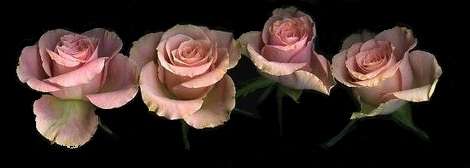
| Author Notes |
coquette = woman who flirts
Tulle = see through fablic SENRYU is a Japanese poem with a title that deepens its meaning. Senryu is similar to Haiku but It's about human nature and it doesn't include a season word (kigo). It's written in three lines with 17 syllables or less. These poems use a pause usually marked by a dash before the satori (an insightful twist to ponder). Alliteration and metaphor are okay. Never rhymes. the em-dash ( -- ) is used to emphasize an interruption in speech before the satori. for more information click here collection of senryu ***** The Haiku Foundation of America Thank you very much for taking the time to read and review my poem. gypsy picture from pinterest |
![]()
By Gypsy Blue Rose

| Author Note: | For Rules, Please Read My Author Notes |
she doesn't know I exist
though my heart beats like drums
when she passes by
my Queen of the Universe
the moon and sun
are jealous of her radiant glow
and ardent rays
illuminating her stellar path
she doesn't need
extravagant perfumes
in crystal spray-bottles
her intoxicating scent
of rose and jasmine
follows where she goes
with her royal crown of flowers

| Author Notes |
Ardent = glowing like fire; burning, fiery, or hot:
SENRYU is a Japanese poem with a title that deepens its meaning. Senryu is similar to Haiku but It's about human nature and it doesn't include a season word (kigo). It's written in three lines with 17 syllables or less. These poems use a pause usually marked by a dash before the satori (an insightful twist to ponder). Alliteration and metaphor are okay. Never rhymes. the em-dash ( -- ) is used to emphasize an interruption in speech before the satori. for more information click here collection of senryu ***** The Haiku Foundation of America Thank you very much for taking the time to read and review my poem. Gypsy pictures from pinterest |
![]()
By Gypsy Blue Rose

| Author Note: | for rules and information, please check my author notes |
| Author Notes |
6-6-4 syllables, senryu is written in 17 syllables or less.
Senryu is similar to Haiku but about human nature. Season word (kigo) is not needed. Thank you very much for taking the time to read and review my poem. Gypsy |
![]()
By Gypsy Blue Rose
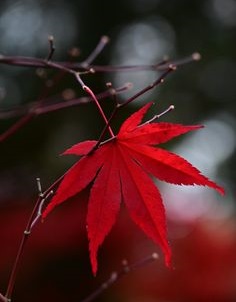
hesitant red leaf
wavers upon the bare bough —
on the cusp of fall

| Author Notes |
Modern Haiku is a brief Japanese poem that epitomizes a single moment. The form is 17 syllables or LESS, in 1 to 4 lines as brief as possible. It doesn't have to follow the 5/7/5 pattern because Japanese and English syllables are not the same. It uses the juxtaposition of two concrete images, often a universal condition of nature and a particular aspect of human experience, in a way that prompts the reader to make an insightful connection between the two. The best haiku alludes to the season of the year. Poetic devices may be used. The haiku is written from an observer's point of view.. -- modern haiku rules -- modern haiku examples
Thank you very much for taking the time to read and review my poem. Gypsy "Poetry heals the wounds inflicted by reason." - Novalis pictures from pinterest |
![]()
By Gypsy Blue Rose


| Author Notes |
HAIKU is a Japanese short unrhymed poem that uses imagistic language to express the essence of a deeply felt moment in time. It resonates on a deeper level, leaving the reader enlightened and making an insightful connection between the top two lines and the last one, called the SATORI. It originated in the thirteenth century and was mastered a century later by Matsuo Basho. HAIKU uses a dash to pause before the SATORI.. Haiku is about nature and it alludes to a season of the year. The haiku is written from an observer's point of view. In Japan, haiku is written in 17 syllables and three lines ( 5/7/5) but in English is 17 syllables OR LESS because English syllables are longer than Japanese syllables. Avoid capitalization (except proper names) and punctuation. Avoid metaphor and personification, you write about what you can SEE. === click here to read Haiku Society of America, HAIKU EXAMPLES === click here to read Haiku Society of America HAIKU RULES === click here to read why is 5/7/5 OR LESS rule === Modern Haiku
Thank you very much for taking the time to read and review my poem. Gypsy "Poetry heals the wounds inflicted by reason." - Novalis |
![]()
By Gypsy Blue Rose
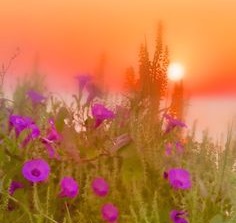
| Author Note: | For my friends, Helen and James - for rules, please check my author notes |

| Author Notes |
For those of you who prayed for my son, who is at the hospital for congestive heart failure, I'm happy to tell you that he is doing better and should go home tomorrow. Thank you!
The flower is called 'morning glory'. HAIKU is a Japanese short unrhymed poem that uses imagistic language to express the essence of a deeply felt moment in time. It resonates on a deeper level, leaving the reader enlightened and making an insightful connection between the top two lines and the last one, called the SATORI. It originated in the thirteenth century and was mastered a century later by Matsuo Basho. HAIKU uses a dash to pause before the SATORI.. Haiku is about nature and it alludes to a season of the year. The haiku is written from an observer's point of view. In Japan, haiku is written in 17 syllables and three lines ( 5/7/5) but in English is 17 syllables OR LESS because English syllables are longer than Japanese syllables. Avoid capitalization (except proper names) and punctuation. Avoid metaphor and personification, you write about what you can SEE. === click here to read Haiku Society of America, HAIKU EXAMPLES === click here to read Haiku Society of America HAIKU RULES === click here to read why is 5/7/5 OR LESS rule === Modern Haiku Thank you very much for taking the time to read and review my poem. Gypsy "Poetry heals the wounds inflicted by reason." - Novalis picture from pinterest |
![]()
By Gypsy Blue Rose


| Author Notes |
-- A butterfly kiss is when one person flutters their eyelashes on someone's cheek and it tickles
HAIKU is a Japanese short unrhymed poem that uses imagistic language to express the essence of a deeply felt moment in time. It resonates on a deeper level, leaving the reader enlightened and making an insightful connection between the top two lines and the last one, called the SATORI. It originated in the thirteenth century and was mastered a century later by Matsuo Basho. HAIKU uses a dash to pause before the SATORI.. Haiku is about nature and it alludes to a season of the year. The haiku is written from an observer's point of view. In Japan, haiku is written in 17 syllables and three lines ( 5/7/5) but in English is 17 syllables OR LESS because English syllables are longer than Japanese syllables. Avoid capitalization (except proper names) and punctuation. Avoid metaphor and personification, you write about what you can SEE. === click here to read Haiku Society of America, HAIKU EXAMPLES === click here to read Haiku Society of America HAIKU RULES === click here to read why is 5/7/5 OR LESS rule === Modern Haiku Thank you very much for taking the time to read and review my poem. Gypsy "Poetry heals the wounds inflicted by reason." - Novalis pictures from pinterest |
![]()
By Gypsy Blue Rose
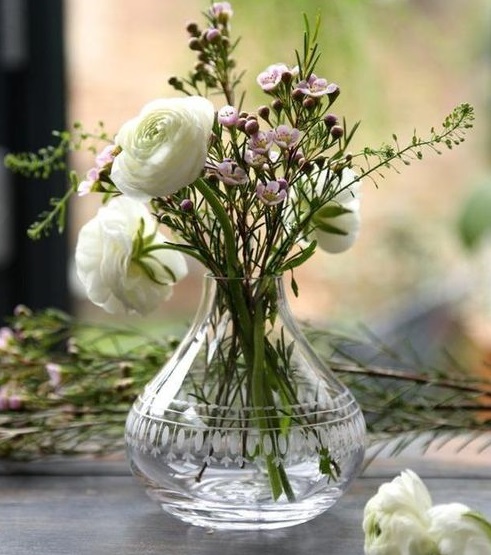
| Author Note: | For Rules, Please Read My Author Notes |
sunday’s fresh flowers
in the crystal vase—
sunrays warm the cold marble grave

| Author Notes |
HAIKU is a Japanese short unrhymed poem that uses imagistic language to express the essence of a deeply felt moment in time. It resonates on a deeper level, leaving the reader enlightened and making an insightful connection between the top two lines and the last one, called the SATORI. It originated in the thirteenth century and was mastered a century later by Matsuo Basho. HAIKU uses a dash to pause before the SATORI.. Haiku is about nature and it alludes to a season of the year. The haiku is written from an observer's point of view. In Japan, haiku is written in 17 syllables and three lines ( 5/7/5) but in English is 17 syllables OR LESS because English syllables are longer than Japanese syllables. Avoid capitalization (except proper names) and punctuation. Avoid metaphor and personification, you write about what you can SEE. === click here to read Haiku Society of America, HAIKU EXAMPLES === click here to read Haiku Society of America HAIKU RULES === click here to read why is 5/7/5 OR LESS rule === Modern Haiku
Thank you very much for taking the time to read and review my poem. Gypsy "Poetry heals the wounds inflicted by reason." - Novalis pictures from pinterest |
![]()
By Gypsy Blue Rose

serene morning—
sunrise
in my cup
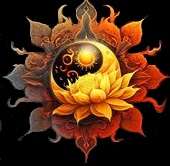
| Author Notes |
Thank you for reading my poem.
Gypsy |
![]()
By Gypsy Blue Rose

| Author Note: | For Rules, Please Read My Author Notes |
white lilies bathe
in twilight as blushing brides—
waiting for the moon

| Author Notes |
HAIKU is a Japanese short unrhymed poem that uses imagistic language to express the essence of a deeply felt moment in time. It resonates on a deeper level, leaving the reader enlightened and making an insightful connection between the top two lines and the last one, called the SATORI. It originated in the thirteenth century and was mastered a century later by Matsuo Basho. HAIKU uses a dash to pause before the SATORI. Haiku is about nature and it alludes to a season of the year. In Japan, haiku is written in 17 syllables and three lines ( 5/7/5) but in English is 17 syllables OR LESS because English syllables are longer than Japanese syllables. Avoid capitalization (except proper names) and punctuation. click here to read haiku rules
Thank you very much for taking the time to read and review my poem. Gypsy "Poetry heals the wounds inflicted by reason." - Novalis pictures from pinterest - flowers are Calla Lilies |
![]()
By Gypsy Blue Rose

| Author Note: | For Rules, Please Read My Author Notes |
smooth sapling
grew to be a twisted tree—
unopened child-proof bottle

| Author Notes |
Sapling = young tree
HAIKU is a Japanese short unrhymed poem that uses imagistic language to express the essence of a deeply felt moment in time. It resonates on a deeper level, leaving the reader enlightened and making an insightful connection between the top two lines and the last one, called the SATORI. It originated in the thirteenth century and was mastered a century later by Matsuo Basho. HAIKU uses a dash to pause before the SATORI.. Haiku is about nature and it alludes to a season of the year. The haiku is written from an observer's point of view. In Japan, haiku is written in 17 syllables and three lines ( 5/7/5) but in English is 17 syllables OR LESS because English syllables are longer than Japanese syllables. Avoid capitalization (except proper names) and punctuation. Avoid metaphor and personification, you write about what you can SEE. === click here to read Haiku Society of America, HAIKU EXAMPLES === click here to read Haiku Society of America HAIKU RULES === click here to read why is 5/7/5 OR LESS rule === Modern Haiku Thank you very much for taking the time to read and review my poem. Gypsy "Poetry heals the wounds inflicted by reason." - Novalis pictures from pinterest |
![]()
By Gypsy Blue Rose
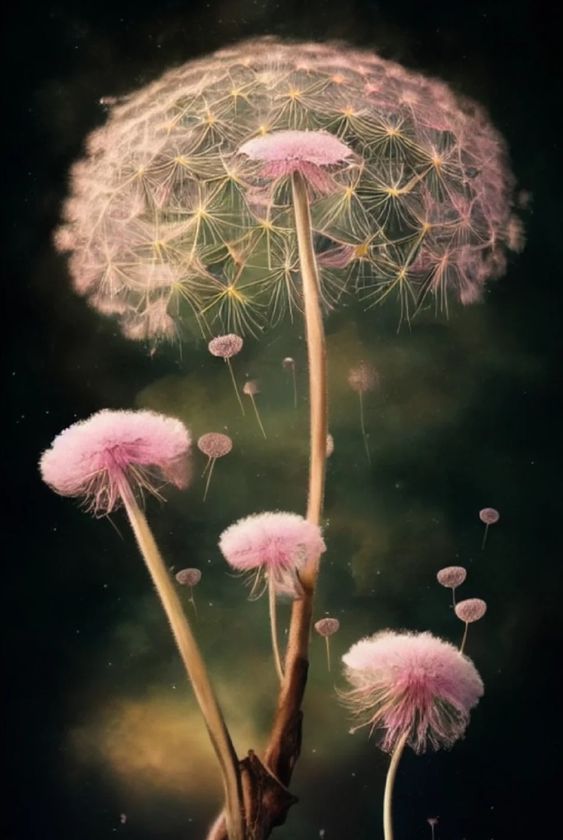
| Author Note: | For Rules, Please Read My Author Notes |
dandelion seeds glide
by window of cancer ward—
girl makes a wish
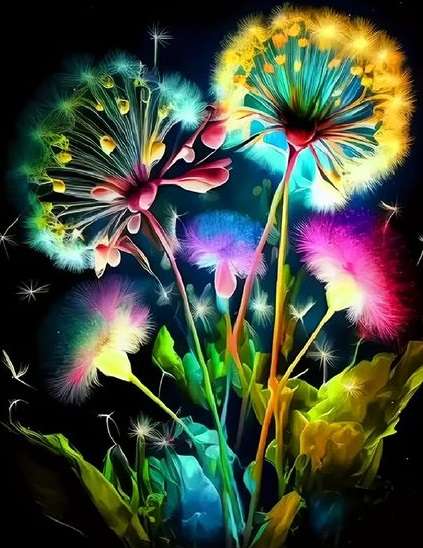
| Author Notes |
October is breast cancer awareness month. However, the poem is about a child with cancer
SENRYU is a Japanese poem with a title that deepens its meaning. Senryu is similar to Haiku but It's about human nature and it doesn't include a season word (kigo). It's written in three lines with 17 syllables or less. These poems use a pause usually marked by a dash before the satori (an insightful twist to ponder). Alliteration and metaphor are okay. Never rhymes. the em-dash ( -- ) is used to emphasize an interruption in speech before the satori. for more information click here collection of senryu ***** The Haiku Foundation of America Thank you very much for taking the time to read and review my poem. Gypsy Pictures from pinterest |
![]()
By Gypsy Blue Rose
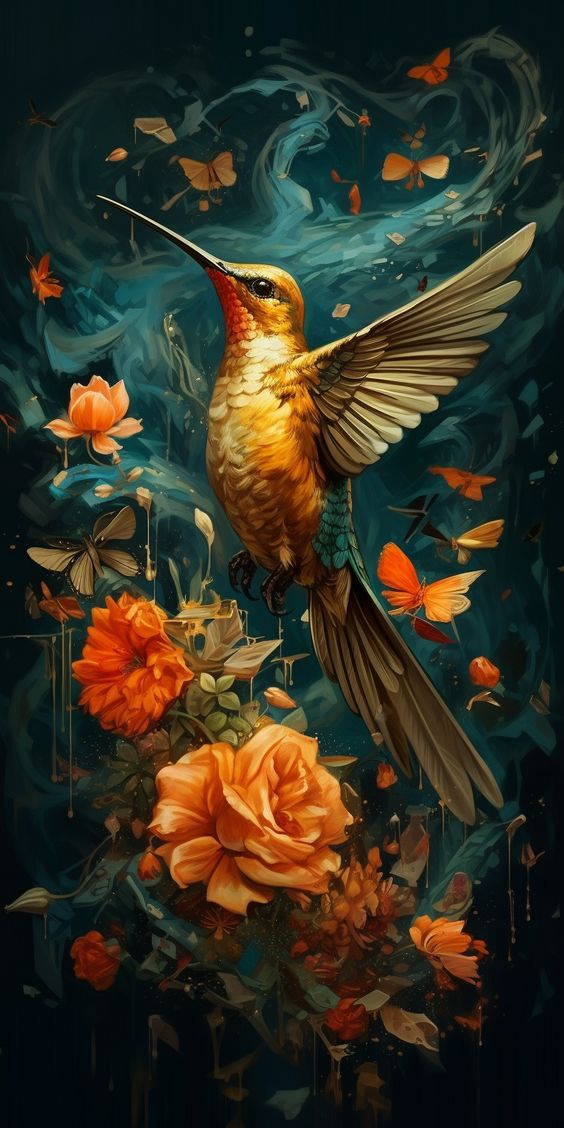
| Author Note: | For Rules, Please Read My Author Notes |
excited tiny dancer
tangos with spring’s sweet blooms—
the hummingbird

| Author Notes |
HAIKU is a Japanese short unrhymed poem that uses imagistic language to express the essence of a deeply felt moment in time. It resonates on a deeper level, leaving the reader enlightened and making an insightful connection between the top two lines and the last one, called the SATORI. HAIKU uses a dash to pause before the SATORI. It originated in the thirteenth century and was mastered a century later by Matsuo Basho.
Haiku is about nature and how humans relate to it. It alludes to a season of the year. In Japan, haiku is written in 17 syllables and three lines ( 5/7/5) but in English is 17 syllables OR LESS because English syllables are longer than Japanese syllables. Avoid capitalization (except proper names) and punctuation. Haiku Information: click here to read haiku examples by √¢??the Haiku Society of America√¢?? click here to read Haiku Society of America HAIKU RULES click here to read why is 5/7/5 OR LESS rule Thank you very much for taking the time to read and review my poem. Gypsy "Poetry heals the wounds inflicted by reason." - Novalis pictures from pinterest |
![]()
By Gypsy Blue Rose

sunflower petals
hold on to last summer day —
with a warm embrace

| Author Notes |
HAIKU is a Japanese short unrhymed poem that uses imagistic language to express the essence of a deeply felt moment in time. It resonates on a deeper level, leaving the reader enlightened and making an insightful connection between the top two lines and the last one, called the SATORI. HAIKU uses a dash to pause before the SATORI. It originated in the thirteenth century and was mastered a century later by Matsuo Basho.
Haiku is about nature and how humans relate to it. It alludes to a season of the year. In Japan, haiku is written in 17 syllables and three lines ( 5/7/5) but in English is 17 syllables OR LESS because English syllables are longer than Japanese syllables. Avoid capitalization (except proper names) and punctuation. Haiku Information: click here to read haiku examples by √?¬¢??the Haiku Society of America√?¬¢?? click here to read Haiku Society of America HAIKU RULES click here to read why is 5/7/5 OR LESS rule Thank you very much for taking the time to read and review my poem. Gypsy "Poetry heals the wounds inflicted by reason." - Novalis pictures from pinterest |
![]()
By Gypsy Blue Rose

| Author Note: | For Rules, Please Read My Author Notes |

| Author Notes |
Picture is Nepal Mountain Range
Modern Haiku is a brief Japanese poem that epitomizes a single moment. The form is 17 syllables or LESS, in 1 to 4 lines as brief as possible. It doesn't have to follow the 5/7/5 pattern because Japanese and English syllables are not the same. It uses the juxtaposition of two concrete images, often a universal condition of nature and a particular aspect of human experience, in a way that prompts the reader to make an insightful connection between the two. The best haiku alludes to the season of the year. Poetic devices may be used. The haiku is written from an observer's point of view.. -- modern haiku rules -- modern haiku examples If you have any haiku questions, don't hesitate to contact me. Thank you very much for taking the time to read and review my poem. Gypsy "Poetry heals the wounds inflicted by reason." - Novalis picture from google public domain |
![]()
By Gypsy Blue Rose

| Author Note: | For Rules, Please Read My Author Notes |

| Author Notes |
kigo: summer/ syllables: 14
HAIKU is a Japanese short unrhymed poem that uses imagistic language to express the essence of a deeply felt moment in time. It resonates on a deeper level, leaving the reader enlightened and making an insightful connection between the top two lines and the last one, called the SATORI. HAIKU uses a dash to pause before the SATORI. It originated in the thirteenth century and was mastered a century later by Matsuo Basho. Haiku is about nature and how humans relate to it. It alludes to a season of the year. In Japan, haiku is written in 17 syllables and three lines ( 5/7/5) but in English is 17 syllables OR LESS because English syllables are longer than Japanese syllables. Avoid capitalization (except proper names) and punctuation. Haiku Information: click here to read haiku examples by √???√??√?¬¢??the Haiku Society of America√???√??√?¬¢?? click here to read Haiku Society of America HAIKU RULES click here to read why is 5/7/5 OR LESS rule Thank you very much for taking the time to read and review my poem. Gypsy "Poetry heals the wounds inflicted by reason." - Novalis |
![]()
By Gypsy Blue Rose

| Author Note: | For Rules, Please Read My Author Notes |

| Author Notes |
15 syllables/ kigo winter
HAIKU is a Japanese short unrhymed poem that uses imagistic language to express the essence of a deeply felt moment in time. It resonates on a deeper level, leaving the reader enlightened and making an insightful connection between the top two lines and the last one, called the SATORI. HAIKU uses a dash to pause before the SATORI. It originated in the thirteenth century and was mastered a century later by Matsuo Basho. Haiku is about nature and how humans relate to it. It alludes to a season of the year. In Japan, haiku is written in 17 syllables and three lines ( 5/7/5) but in English is 17 syllables OR LESS because English syllables are longer than Japanese syllables. Avoid capitalization (except proper names) and punctuation. Haiku Information: click here to read haiku examples by the Haiku Society of America click here to read Haiku Society of America HAIKU RULES click here to read why is 5/7/5 OR LESS rule Thank you very much for taking the time to read and review my poem. Gypsy "Poetry heals the wounds inflicted by reason." - Novalis picture from pinterest |
![]()
By Gypsy Blue Rose

| Author Note: | For Rules, Please Read My Author Notes |

| Author Notes |
Kigo: Summer - syllable count: 5/6/5
HAIKU is a Japanese short unrhymed poem that uses imagistic language to express the essence of a deeply felt moment in time. It resonates on a deeper level, leaving the reader enlightened and making an insightful connection between the top two lines and the last one, called the SATORI. HAIKU uses a dash to pause before the SATORI. It originated in the thirteenth century and was mastered a century later by Matsuo Basho. Haiku is about nature and how humans relate to it. It alludes to a season of the year. In Japan, haiku is written in 17 syllables and three lines ( 5/7/5) but in English is 17 syllables OR LESS because English syllables are longer than Japanese syllables. Avoid capitalization (except proper names) and punctuation. Haiku Information: click here to read haiku examples by the Haiku Society of America click here to read Haiku Society of America HAIKU RULES click here to read why is 5/7/5 OR LESS rule Thank you very much for taking the time to read and review my poem. Gypsy "Poetry heals the wounds inflicted by reason." - Novalis pictures from pinterest |
![]()
By Gypsy Blue Rose
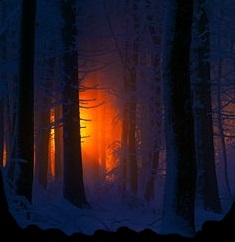
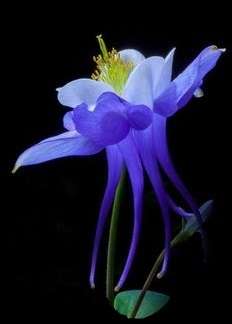
| Author Notes |
ONE-LINE HAIKU In Japan was written in the 13th century. It did not take hold in English until the late 1970s, when Marlene Mountain published her first one-line haiku. It's intended to be read as one unbroken line. It does not include forced grammar pauses except in logical punctuation. simply haiku- one line haiku rules and examples
Thank you very much for taking the time to read and review my poem. Gypsy "The poet waits quietly to paint the unsaid." Atticus |
![]()
By Gypsy Blue Rose

| Author Note: | if you like to join the haiku club, check my author notes |

| Author Notes |
"The secrets of the sea are forgotten at the seashore."- Giorgos Seferis
HAIKU is a Japanese short unrhymed poem that uses imagistic language to express the essence of a deeply felt moment in time. It resonates on a deeper level, leaving the reader enlightened and making an insightful connection between the top two lines and the last one, called the SATORI. HAIKU uses a dash to pause before the SATORI. It originated in the thirteenth century and was mastered a century later by Matsuo Basho. Haiku is about nature and how humans relate to it. It alludes to a season of the year. In Japan, haiku is written in 17 syllables and three lines ( 5/7/5) but in English is 17 syllables OR LESS because English syllables are longer than Japanese syllables. Avoid capitalization (except proper names) and punctuation. Haiku Information: click here to read haiku examples by the Haiku Society of America click here to read Haiku Society of America haiku rules click here to read why is 5/7/5 OR LESS rule Thank you very much for taking the time to read and review my poem. Gypsy "Poetry heals the wounds inflicted by reason." - Novalis pictures from pinterest |
![]()
By Gypsy Blue Rose

| Author Note: | For Rules, Please Read My Author Notes |

| Author Notes |
HAIKU is a Japanese short unrhymed poem that uses imagistic language to express the essence of a deeply felt moment in time. It resonates on a deeper level, leaving the reader enlightened and making an insightful connection between the top two lines and the last one, called the SATORI. HAIKU uses a dash to pause before the SATORI. It originated in the thirteenth century and was mastered a century later by Matsuo Basho.
Haiku is about nature and how humans relate to it. It alludes to a season of the year. In Japan, haiku is written in 17 syllables and three lines ( 5/7/5) but in English is 17 syllables OR LESS because English syllables are longer than Japanese syllables. Avoid capitalization (except proper names) and punctuation. Haiku Information: click here to read haiku examples by √?¬¢??the Haiku Society of America√?¬¢?? click here to read Haiku Society of America HAIKU RULES click here to read why is 5/7/5 OR LESS rule Thank you very much for taking the time to read and review my poem. Gypsy "Poetry heals the wounds inflicted by reason." - Novalis pictures from pinterest |
![]()
By Gypsy Blue Rose
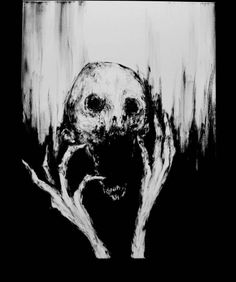
| Author Note: | For Dean Kuch |









| Author Notes |
Happy Halloween!
Dean Kuch and I wrote horror haiku, we wrote and published a book, "Hora Haiku: a book of dark poetry " in Amazon It's also in our portfolios. It's a modern haiku with the theme of horror. modern haiku rules Thank you very much for taking the time to read and review my poem. Gypsy "Poetry heals the wounds inflicted by reason." - Novalis pictures from pinterest |
![]()
By Gypsy Blue Rose

| Author Note: | For Rules, Please Read My Author Notes |

| Author Notes |
HAIKU is a Japanese short unrhymed poem that uses imagistic language to express the essence of a deeply felt moment in time. It resonates on a deeper level, leaving the reader enlightened and making an insightful connection between the top two lines and the last one, called the SATORI. HAIKU uses a dash to pause before the SATORI. It originated in the thirteenth century and was mastered a century later by Matsuo Basho.
Haiku is about nature and how humans relate to it. It alludes to a season of the year. In Japan, haiku is written in 17 syllables and three lines ( 5/7/5) but in English is 17 syllables OR LESS because English syllables are longer than Japanese syllables. Avoid capitalization (except proper names) and punctuation. Haiku Information: click here to read haiku examples by √¢??the Haiku Society of America√¢?? click here to read Haiku Society of America HAIKU RULES click here to read why is 5/7/5 OR LESS rule Thank you very much for taking the time to read and review my poem. Gypsy "Poetry heals the wounds inflicted by reason." - Novalis pictures from pinterest |
![]()
By Gypsy Blue Rose

| Author Note: | For Rules, Please Read My Author Notes |
drizzle falls
on dry sunflowers
tangled in promises
of rain

| Author Notes |
Modern haiku
The most common literary adaptation in English of haiku looks something like this: one to four lines, no strict syllable count but brief, and often with a long/short or short/long asymmetry. These poems too utilize a caesura Images need not be taken from nature, though they may be and often are. Seasonality is optional, though often featured. Here√¢??s an example: in the woodpile the broken ax handle modern haiku rules Thank you very much for taking the time to read and review my poem. Gypsy "Poetry heals the wounds inflicted by reason." - Novalis pictures from pinterest |
![]()
By Gypsy Blue Rose

| Author Note: | For Rules, Please Read My Author Notes |

| Author Notes |
a four-leaf clover represents good luck, I remember looking for them when I was young
HAIKU is a Japanese short unrhymed poem that uses imagistic language to express the essence of a deeply felt moment in time. It resonates on a deeper level, leaving the reader enlightened and making an insightful connection between the top two lines and the last one, called the SATORI. HAIKU uses a dash to pause before the SATORI. It originated in the thirteenth century and was mastered a century later by Matsuo Basho. Haiku is about nature and how humans relate to it. It alludes to a season of the year. In Japan, haiku is written in 17 syllables and three lines ( 5/7/5) but in English is 17 syllables OR LESS because English syllables are longer than Japanese syllables. Avoid capitalization (except proper names) and punctuation. Haiku Information: click here to read haiku examples by √??√?¬¢??the Haiku Society of America√??√?¬¢?? click here to read Haiku Society of America HAIKU RULES click here to read why is 5/7/5 OR LESS rule Thank you very much for taking the time to read and review my poem. Gypsy "Poetry heals the wounds inflicted by reason." - Novalis pictures from pinterest |
![]()
By Gypsy Blue Rose

| Author Note: | For Rules, Please Read My Author Notes |

white dove’s feathers
glide on morning breeze
and the last specks of dawn
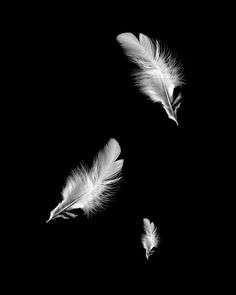
| Author Notes |
HAIKU is a Japanese short unrhymed poem that uses imagistic language to express the essence of a deeply felt moment in time. It resonates on a deeper level, leaving the reader enlightened and making an insightful connection between the top two lines and the last one, called the SATORI. HAIKU uses a dash to pause before the SATORI. It originated in the thirteenth century and was mastered a century later by Matsuo Basho.
Haiku is about nature and how humans relate to it. It alludes to a season of the year. In Japan, haiku is written in 17 syllables and three lines ( 5/7/5) but in English is 17 syllables OR LESS because English syllables are longer than Japanese syllables. Avoid capitalization (except proper names) and punctuation. Haiku Information: click here to read haiku examples by √???????√??????√?????√????√???√??√?¬¢??the Haiku Society of America√???????√??????√?????√????√???√??√?¬¢?? click here to read Haiku Society of America HAIKU RULES click here to read why is 5/7/5 OR LESS rule Thank you very much for taking the time to read and review my poem. Gypsy "Poetry heals the wounds inflicted by reason." - Novalis pictures from pinterest |
![]()
By Gypsy Blue Rose


| Author Notes |
HAIKU is a Japanese short unrhymed poem that uses imagistic language to express the essence of a deeply felt moment in time. It resonates on a deeper level, leaving the reader enlightened and making an insightful connection between the top two lines and the last one, called the SATORI. HAIKU uses a dash to pause before the SATORI. It originated in the thirteenth century and was mastered a century later by Matsuo Basho. Haiku is about nature and how humans relate to it. It alludes to a season of the year. In Japan, haiku is written in 17 syllables and three lines ( 5/7/5) but in English is 17 syllables OR LESS because English syllables are longer than Japanese syllables. Avoid capitalization (except proper names) and punctuation.
Sources: click here to read haiku examples by the Haiku Society of America click here to read Haiku Society of America HAIKU RULES click here to read why is 5/7/5 OR LESS rule Thank you very much for taking the time to read and review my poem. Gypsy "Poetry heals the wounds inflicted by reason." - Novalis pictures from pinterest |
![]()
By Gypsy Blue Rose

| Author Note: | For Rules, Please Read My Author Notes |
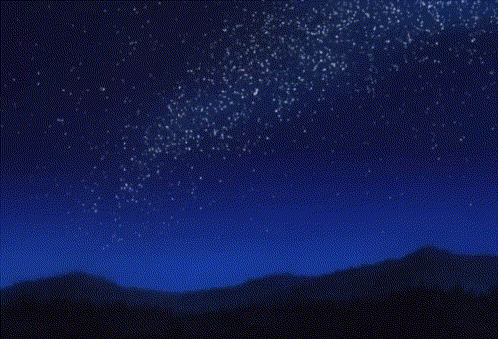
| Author Notes |
SENRYU is a Japanese poem with a title that deepens its meaning. Senryu is similar to Haiku but It's about human nature and it doesn't include a season word (kigo). It's written in three lines with 17 syllables or less. These poems use a pause usually marked by a dash before the satori (an insightful twist to ponder). Alliteration and metaphor are okay. Never rhymes. the em-dash ( -- ) is used to emphasize an interruption in speech before the satori.
for more information click here collection of senryu ***** The Haiku Foundation of America Thank you very much for taking the time to read and review my poem. Gypsy picture from pinterest |
![]()
By Gypsy Blue Rose

| Author Note: | For Rules, Please Read My Author Notes |

| Author Notes |
HAIKU is a Japanese short unrhymed poem that uses imagistic language to express the essence of a deeply felt moment in time. It resonates on a deeper level, leaving the reader enlightened and making an insightful connection between the top two lines and the last one, called the SATORI. HAIKU uses a dash to pause before the SATORI. It originated in the thirteenth century and was mastered a century later by Matsuo Basho.
Haiku is about nature and how humans relate to it. It alludes to a season of the year. In Japan, haiku is written in 17 syllables and three lines ( 5/7/5) but in English is 17 syllables OR LESS because English syllables are longer than Japanese syllables. Avoid capitalization (except proper names) and punctuation. Haiku Information: click here to read haiku examples by √¢??the Haiku Society of America√¢?? click here to read Haiku Society of America HAIKU RULES click here to read why is 5/7/5 OR LESS rule Thank you very much for taking the time to read and review my poem. Gypsy "Poetry heals the wounds inflicted by reason." - Novalis pictures from pinterest |
![]()
By Gypsy Blue Rose

| Author Note: | For Rules, Please Read My Author Notes |
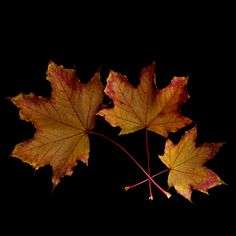
| Author Notes |
Modern haiku
The most common literary adaptation in English of haiku looks something like this: one to four lines, no strict syllable count but brief, and often with a long/short or short/long asymmetry. These poems too utilize a caesura Images need not be taken from nature, though they may be and often are. Seasonality is optional, though often featured. Here's an example: in the woodpile the broken ax handle modern haiku rules Thank you for reading and reviewing my poem. Gypsy Pictures from pinterest |
![]()
By Gypsy Blue Rose

| Author Note: | For Rules, Please Read My Author Notes |

| Author Notes |
SENRYU is a Japanese poem with a title that deepens its meaning. Senryu is similar to Haiku but It's about human nature and it doesn't include a season word (kigo). It's written in three lines with 17 syllables or less. These poems use a pause usually marked by a dash before the satori (an insightful twist to ponder). Alliteration and metaphor are okay. Never rhymes. the em-dash ( -- ) is used to emphasize an interruption in speech before the satori.
for more information click here collection of senryu ***** The Haiku Foundation of America Thank you very much for taking the time to read and review my poem. Gypsy |
![]()
By Gypsy Blue Rose

| Author Note: | For Rules, Please Read My Author Notes |
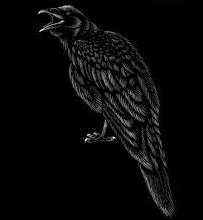
| Author Notes |
HAIKU is a Japanese short unrhymed poem that uses imagistic language to express the essence of a deeply felt moment in time. It resonates on a deeper level, leaving the reader enlightened and making an insightful connection between the top two lines and the last one, called the SATORI. HAIKU uses a dash to pause before the SATORI. It was created in the 17th century by Zen Monk, Matsuo Basho. Haiku alludes to a season of the year. In Japan, haiku is written in 17 syllables and three lines ( 5/7/5) but in English is 17 syllables OR LESS because English and Japanese syllables are different. Avoid capitalization (except proper names) and punctuation.
click here to read haiku examples click here to read haiku rules click here to read why is 5/7/5 OR LESS rule Thank you very much for taking the time to read and review my poem. Gypsy "Poetry heals the wounds inflicted by reason." - Novalis pictures from pinterest |
![]()
By Gypsy Blue Rose

| Author Note: | For Rules, Please Read My Author Notes |

| Author Notes |
HAIKU is a Japanese short unrhymed poem that uses imagistic language to express the essence of a deeply felt moment in time. It resonates on a deeper level, leaving the reader enlightened and making an insightful connection between the top two lines and the last one, called the SATORI. HAIKU uses a dash to pause before the SATORI. It was created in the 17th century by Zen Monk, Matsuo Basho. Haiku alludes to a season of the year. In Japan, haiku is written in 17 syllables and three lines ( 5/7/5) but in English is 17 syllables OR LESS because English and Japanese syllables are different. Avoid capitalization (except proper names) and punctuation.
click here to read haiku examples click here to read haiku rules click here to read why is 5/7/5 OR LESS rule Thank you very much for taking the time to read and review my poem. Gypsy "Poetry heals the wounds inflicted by reason." - Novalis pictures from pinterest |
![]()
By Gypsy Blue Rose
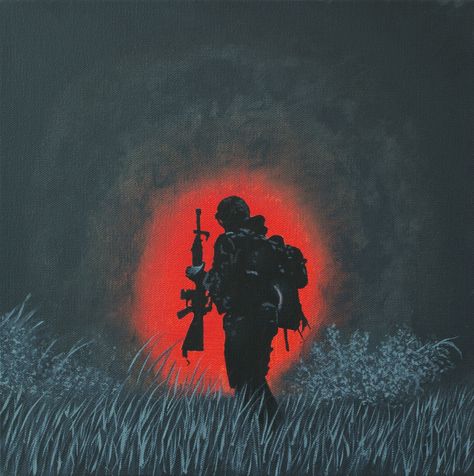
he was 18 years old
not old enough to drink
but old enough for war
his mother’s heart aches
she prays and prays
for his safe return
the day army men
knocked on her door
her heart skipped a beat
he was 18 years old
he was 18 years old
he was 18 years old

![]()
By Gypsy Blue Rose

| Author Note: | For Rules, Please Read My Author Notes |
I’ll meet you by the lake —
when autumn bursts
with gold and crimson leaves

| Author Notes |
HAIKU is a Japanese short unrhymed poem that uses imagistic language to express the essence of a deeply felt moment in time. It resonates on a deeper level, leaving the reader enlightened and making an insightful connection between the top two lines and the last one, called the SATORI. HAIKU uses a dash to pause before the SATORI. It was created in the 17th century by Zen Monk, Matsuo Basho. Haiku alludes to a season of the year. In Japan, haiku is written in 17 syllables and three lines ( 5/7/5) but in English is 17 syllables OR LESS because English and Japanese syllables are different. Avoid capitalization (except proper names) and punctuation.
click here to read haiku examples click here to read haiku rules click here to read why is 5/7/5 OR LESS rule Thank you very much for taking the time to read and review my poem. Gypsy "Poetry heals the wounds inflicted by reason." - Novalis pictures from pinterest |
![]()
By Gypsy Blue Rose

| Author Note: | For Rules, Please Read My Author Notes |
purple wildflowers
grow by the river’s edge—
unattended

| Author Notes |
"Let Go and Let God" - is an A.A. program slogan
The title is inspired by an Alcoholics Anonymous ( AA ) slogan that means, we can't control everything in our lives, and in order to recover, you have to turn your will and your life over to the care of God (or any higher power of your understanding). for more information HAIKU is a Japanese short unrhymed poem that uses imagistic language to express the essence of a deeply felt moment in time. It resonates on a deeper level, leaving the reader enlightened and making an insightful connection between the top two lines and the last one, called the SATORI. HAIKU uses a dash to pause before the SATORI. It was created in the 17th century by Zen Monk, Matsuo Basho. Haiku alludes to a season of the year. In Japan, haiku is written in 17 syllables and three lines ( 5/7/5) but in English is 17 syllables OR LESS because English and Japanese syllables are different. Avoid capitalization (except proper names) and punctuation. click here to read haiku examples click here to read haiku rules click here to read why is 5/7/5 OR LESS rule Thank you very much for taking the time to read and review my poem. Gypsy "Poetry heals the wounds inflicted by reason." - Novalis pictures from pinterest |
![]()
By Gypsy Blue Rose
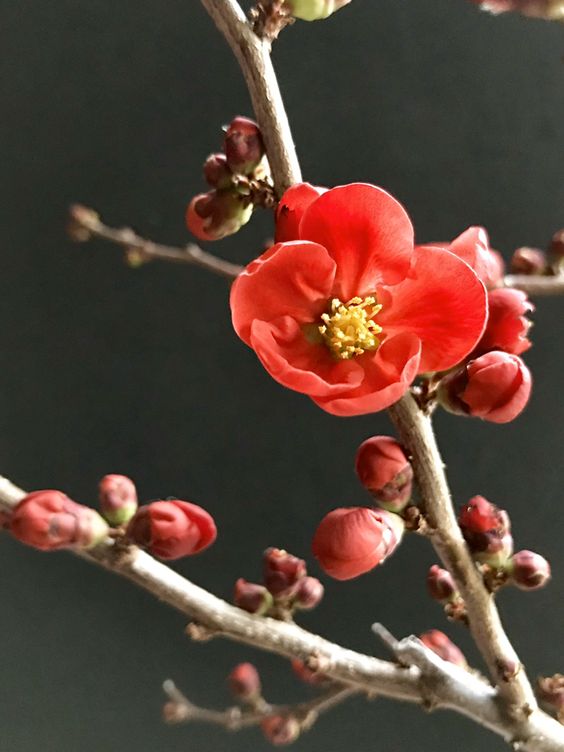
| Author Note: | for Sandra-Stoner Mitchell |
blood red quince
at the cemetery—
grief petals on snow

| Author Notes |
My poem is for Sandra-Stoner Mitchell, who lost her brother, Ian, on November 11th. Please, let's pray for her and her family.
HAIKU, DEATH POEM (Jisei), is a genre of Japanese poetry. It offers a reflection on the imminent death of the author. It originated in Zen Buddhism. to see source click here DEATH POEM is a genre of poetry that developed in Japan. They tend to offer a reflection on death coupled with a meaningful observation on life. It originates in Zen Buddhism. The poem's structure can be written in haiku 5/7/5 or tanka 5/7/5/7/7 form. Death poems are typically graceful, natural, and emotionally neutral. Death described, metaphorically, references such as sunsets, autumn or falling cherry blossom suggest the transience of life. wikipedia Thank you for reading and reviewing my poem. Gypsy Japanese quince flowers (Korukoji) has dark green leaves and deep red flowers. Some hybrid are thornless. |
![]()
By Gypsy Blue Rose

| Author Note: | For Rules, Please Read My Author Notes |

| Author Notes |
SENRYU is a Japanese short unrhymed poem that uses imagistic language to express the essence of a deeply felt moment in time. It resonates on a deeper level, leaving the reader enlightened and making an insightful connection between the top two lines and the last one, called the SATORI. It's similar to haiku but it deals with human nature and it doesn't need a season word.
Thank you very much for taking the time to read and review my poem. Gypsy "Poetry heals the wounds inflicted by reason." - Novalis pictures from pinterest |
![]()
By Gypsy Blue Rose

| Author Note: | For Rules, Please Read My Author Notes |


 ~
~




| Author Notes |
HAIKU is a Japanese short unrhymed poem that uses imagistic language to express the essence of a deeply felt moment in time. It resonates on a deeper level, leaving the reader enlightened and making an insightful connection between the top two lines and the last one, called the SATORI. HAIKU uses a dash to pause before the SATORI. It was created in the 17th century by Zen Monk, Matsuo Basho. Haiku alludes to a season of the year. In Japan, haiku is written in 17 syllables and three lines ( 5/7/5) but in English is 17 syllables OR LESS because English and Japanese syllables are different. Avoid capitalization (except proper names) and punctuation.
click here to read haiku examples click here to read haiku rules click here to read why is 5/7/5 OR LESS rule Thank you very much for taking the time to read and review my poem.         

glitter-graphics.com |
![]()
By Gypsy Blue Rose

we part at dusk—
when the dying sun sparkles
over fields of gold
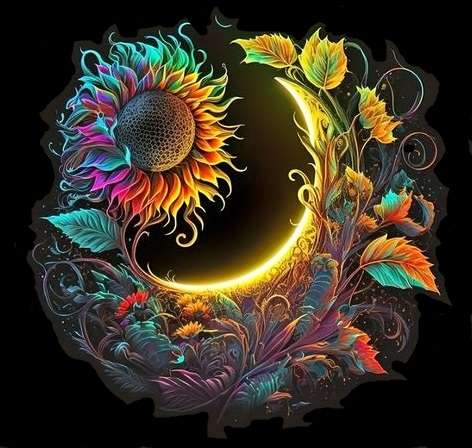
| Author Notes |
Thank you for reading and reviewing my poem,
        

glitter-graphics.com |
![]()
By Gypsy Blue Rose

| Author Note: | For Rules, Please Read My Author Notes |
crimson leaves
fall over quiet cemetery—
dead silence

| Author Notes |
HAIKU is a Japanese short unrhymed poem that uses imagistic language to express the essence of a deeply felt moment in time. It resonates on a deeper level, leaving the reader enlightened and making an insightful connection between the top two lines and the last one, called the SATORI. HAIKU uses a dash to pause before the SATORI. It was created in the 17th century by Zen Monk, Matsuo Basho. Haiku alludes to a season of the year. In Japan, haiku is written in 17 syllables and three lines ( 5/7/5) but in English is 17 syllables OR LESS because English and Japanese syllables are different. Avoid capitalization (except proper names) and punctuation.
click here to read haiku examples click here to read haiku rules click here to read why is 5/7/5 OR LESS rule Thank you very much for taking the time to read and review my poem.         

glitter-graphics.com |
![]()
By Gypsy Blue Rose

| Author Note: | for rules and information, please check my author notes |
| Author Notes |
Haiku is a form of Japanese poetry made of short, unrhymed lines that evoke natural imagery. The haiku gives a moment of insight based on observation.
Japanese haiku are written in 3 lines with 5/7/5 syllables form. In English is 3 lines with 17 syllables OR LESS due to the difference between Japanese and English syllables. for haiku rules click here - modern Haiku rules Thank you very much for reading and reviewing my poem.         

glitter-graphics.com |
![]()
By Gypsy Blue Rose
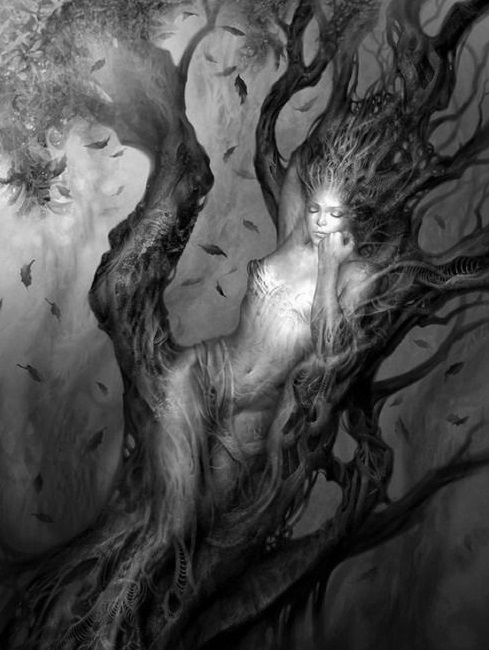
smooth bared boughs
dance with autumn’s crisp wind—
crimson mantle by her roots

| Author Notes |
HAIKU is a Japanese short unrhymed poem that uses imagistic language to express the essence of a deeply felt moment in time. It resonates on a deeper level, leaving the reader enlightened and making an insightful connection between the top two lines and the last one, called the SATORI. HAIKU uses a dash to pause before the SATORI. It was created in the 17th century by Zen Monk, Matsuo Basho. Haiku alludes to a season of the year. In Japan, haiku is written in 17 syllables and three lines ( 5/7/5) but in English is 17 syllables OR LESS because English and Japanese syllables are different. Avoid capitalization (except proper names) and punctuation.
click here to read haiku examples click here to read haiku rules click here to read why is 5/7/5 OR LESS rule Thank you very much for taking the time to read and review my poem. 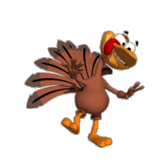
glitter-graphics.com         

glitter-graphics.com |
![]()
By Gypsy Blue Rose

| Author Note: | For Rules, Please Read My Author Notes |
old oaktree
by abandoned house—
dead branches with empty nests

| Author Notes |
HAIKU is a Japanese short unrhymed poem that uses imagistic language to express the essence of a deeply felt moment in time. It resonates on a deeper level, leaving the reader enlightened and making an insightful connection between the top two lines and the last one, called the SATORI. HAIKU uses a dash to pause before the SATORI. It was created in the 17th century by Zen Monk, Matsuo Basho. Haiku alludes to a season of the year. In Japan, haiku is written in 17 syllables and three lines ( 5/7/5) but in English is 17 syllables OR LESS because English and Japanese syllables are different. Avoid capitalization (except proper names) and punctuation.
click here to read haiku examples click here to read haiku rules click here to read why is 5/7/5 OR LESS rule Thank you very much for taking the time to read and review my poem. Gypsy "Poetry heals the wounds inflicted by reason." - Novalis pictures from pinterest |
![]()
By Gypsy Blue Rose

| Author Note: | For Rules, Please Read My Author Notes |

| Author Notes |
HAIKU is a Japanese short unrhymed poem that uses imagistic language to express the essence of a deeply felt moment in time. It resonates on a deeper level, leaving the reader enlightened and making an insightful connection between the top two lines and the last one, called the SATORI. HAIKU uses a dash to pause before the SATORI. It was created in the 17th century by Zen Monk, Matsuo Basho. Haiku alludes to a season of the year. In Japan, haiku is written in 17 syllables and three lines ( 5/7/5) but in English is 17 syllables OR LESS because English and Japanese syllables are different. Avoid capitalization (except proper names) and punctuation.
click here to read haiku examples click here to read haiku rules click here to read why is 5/7/5 OR LESS rule Thank you very much for taking the time to read and review my poem. Gypsy "Poetry heals the wounds inflicted by reason." - Novalis pictures from pinterest |
![]()
By Gypsy Blue Rose

| Author Note: | For Rules, Please Read My Author Notes |

| Author Notes |
SENRYU is a Japanese short unrhymed poem that uses imagistic language to express the essence of a deeply felt moment in time. Unlike Haiku, senryu is about human nature and doesn't need a season word. It resonates on a deeper level, leaving the reader enlightened and making an insightful connection between the top two lines and the last one, called the SATORI. It's written in 17 syllables OR LESS and three lines.
Gypsy "Poetry heals the wounds inflicted by reason." - Novalis pictures from pinterest |
![]()
By Gypsy Blue Rose

| Author Note: | dragonflies' lifespan is very short |

| Author Notes |
The "lotus flower" and "living in the moment" are Japanese symbols of transcendence and living in the moment. Both are zen concepts used in haiku.
The lifespan of a dragonfly is short - anywhere from a week to eight weeks. However, you might be surprised to learn that some dragonflies survive for more than ten times the length of adults while underwater as nymphs! dragonflies have inhabited the earth for almost 300 million years. HAIKU is a Japanese short unrhymed poem that uses imagistic language to express the essence of a deeply felt moment in time. It resonates on a deeper level, leaving the reader enlightened and making an insightful connection between the top two lines and the last one, called the SATORI. HAIKU uses a dash to pause before the SATORI. It was created in the 17th century by Zen Monk, Matsuo Basho. Haiku alludes to a season of the year. In Japan, haiku is written in 17 syllables and three lines ( 5/7/5) but in English is 17 syllables OR LESS because English and Japanese syllables are different. Avoid capitalization (except proper names) and punctuation. click here to read haiku examples click here to read haiku rules click here to read why is 5/7/5 OR LESS rule Thank you very much for taking the time to read and review my poem. Gypsy "Poetry heals the wounds inflicted by reason." - Novalis pictures from pinterest |
![]()
By Gypsy Blue Rose

| Author Note: | For Rules, Please Read My Author Notes |

| Author Notes |
HAIKU is a Japanese short unrhymed poem that uses imagistic language to express the essence of a deeply felt moment in time. It resonates on a deeper level, leaving the reader enlightened and making an insightful connection between the top two lines and the last one, called the SATORI. HAIKU uses a dash to pause before the SATORI. It was created in the 17th century by Zen Monk, Matsuo Basho. Haiku alludes to a season of the year. In Japan, haiku is written in 17 syllables and three lines ( 5/7/5) but in English is 17 syllables OR LESS because English and Japanese syllables are different. Avoid capitalization (except proper names) and punctuation.
click here to read haiku examples click here to read haiku rules click here to read why is 5/7/5 OR LESS rule Thank you very much for taking the time to read and review my poem. Gypsy "Poetry heals the wounds inflicted by reason." - Novalis pictures from pinterest |
![]()
By Gypsy Blue Rose

| Author Note: | For Rules, Please Read My Author Notes |
through the window
purple dusk shadows slide in —
tangled with scent of death

winds dance with night’s veil
covering the cold body—
his spirit soars free

| Author Notes |
JISEI (death poem) is a genre of Japanese poetry. It offers a reflection on the imminent death of the author. It originated in Zen Buddhism. to see source click here
DEATH POEM is a genre of poetry that developed in Japan. They tend to offer a reflection on death coupled with a meaningful observation on life. It originates in Zen Buddhism. The poem's structure can be written in haiku 5/7/5 or tanka 5/7/5/7/7 form. Death poems are typically graceful, natural, and emotionally neutral. Death described, metaphorically, references such as sunsets, autumn or falling cherry blossom suggest the transience of life. wikipedia Happy Thanksgiving Day! Thank you for reading and reviewing my poem, 
glitter-graphics.com Happy Thanksgiving Day!         

glitter-graphics.com |
![]()
By Gypsy Blue Rose
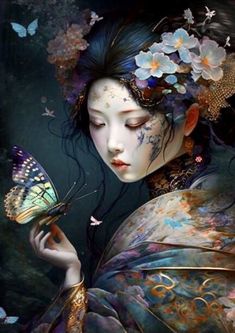
| Author Note: | For Rules, Please Read My Author Notes |
china doll on the shelf
collecting dust —
since grandma left
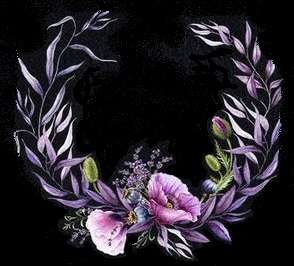
| Author Notes |
HAIKU is a Japanese short unrhymed poem that uses imagistic language to express the essence of a deeply felt moment in time. It resonates on a deeper level, leaving the reader enlightened and making an insightful connection between the top two lines and the last one, called the SATORI. HAIKU uses a dash to pause before the SATORI. It was created in the 17th century by Zen Monk, Matsuo Basho. Haiku alludes to a season of the year. In Japan, haiku is written in 17 syllables and three lines ( 5/7/5) but in English is 17 syllables OR LESS because English and Japanese syllables are different. Avoid capitalization (except proper names) and punctuation.
click here to read haiku examples click here to read haiku rules click here to read why is 5/7/5 OR LESS rule Thank you very much for taking the time to read and review my poem. Gypsy "Poetry heals the wounds inflicted by reason." - Novalis pictures from pinterest |
![]()
By Gypsy Blue Rose

| Author Note: | You May Check My Author Notes for Rules |

| Author Notes |
HAIKU is a Japanese short unrhymed poem that uses imagistic language to express the essence of a deeply felt moment in time. It resonates on a deeper level, leaving the reader enlightened and making an insightful connection between the top two lines and the last one, called the SATORI. HAIKU uses a dash to pause before the SATORI. It was created in the 17th century by Zen Monk, Matsuo Basho. Haiku alludes to a season of the year. In Japan, haiku is written in 17 syllables and three lines ( 5/7/5) but in English is 17 syllables OR LESS because English and Japanese syllables are different. Avoid capitalization (except proper names) and punctuation.
click here to read haiku examples click here to read haiku rules click here to read why is 5/7/5 OR LESS rule Thank you very much for taking the time to read and review my poem. Gypsy "Poetry heals the wounds inflicted by reason." - Novalis pictures from pinterest |
![]()
By Gypsy Blue Rose

| Author Note: | For Rules, Please Read My Author Notes |

| Author Notes |
Point Reyes is a national seashore near San Francisco, California.
CONTEMPORARY HAIKU is a Japanese short unrhymed poem that uses imagistic language to express the essence of a deeply felt moment in time. It resonates on a deeper level, leaving the reader enlightened and making an insightful connection. American haiku doesn't follow the 5/7/5 form, because Japanese syllables are much shorter. The rule of thumb is to write it as succint as possible and 17 syllables or less. HAIKU uses a dash to pause before the SATORI. Avoid capitalization (except proper names) and punctuation. click here to read haiku examples click here to read haiku rules click here to read why is 5/7/5 OR LESS rule Thank you very much for taking the time to read and review my poem. Gypsy "Poetry heals the wounds inflicted by reason." - Novalis pictures from pinterest |
![]()
By Gypsy Blue Rose


| Author Notes |
HAIKU is a Japanese short unrhymed poem that uses imagistic language to express the essence of a deeply felt moment in time. It resonates on a deeper level, leaving the reader enlightened and making an insightful connection between the top two lines and the last one, called the SATORI. HAIKU uses a dash to pause before the SATORI. It was created in the 17th century by Zen Monk, Matsuo Basho. Haiku alludes to a season of the year. In Japan, haiku is written in 17 syllables and three lines ( 5/7/5) but in English is 17 syllables OR LESS because English and Japanese syllables are different. Avoid capitalization (except proper names) and punctuation.
click here to read haiku examples click here to read haiku rules click here to read why is 5/7/5 OR LESS rule Thank you very much for taking the time to read and review my poem. Gypsy "Poetry heals the wounds inflicted by reason." - Novalis pictures from pinterest |
![]()
By Gypsy Blue Rose

| Author Note: | For Rules, Please Read My Author Notes |

| Author Notes |
HAIKU is a Japanese short unrhymed poem that uses imagistic language to express the essence of a deeply felt moment in time. It resonates on a deeper level, leaving the reader enlightened and making an insightful connection between the top two lines and the last one, called the SATORI. HAIKU uses a dash to pause before the SATORI. It was created in the 17th century by Zen Monk, Matsuo Basho. Haiku alludes to a season of the year. In Japan, haiku is written in 17 syllables and three lines ( 5/7/5) but in English is 17 syllables OR LESS because English and Japanese syllables are different. Avoid capitalization (except proper names) and punctuation.
click here to read haiku examples click here to read haiku rules click here to read why is 5/7/5 OR LESS rule Thank you very much for taking the time to read and review my poem. Gypsy "Poetry heals the wounds inflicted by reason." - Novalis pictures from pinterest |
![]()
By Gypsy Blue Rose


![]()
By Gypsy Blue Rose

| Author Note: | For Rules, Please Read My Author Notes |
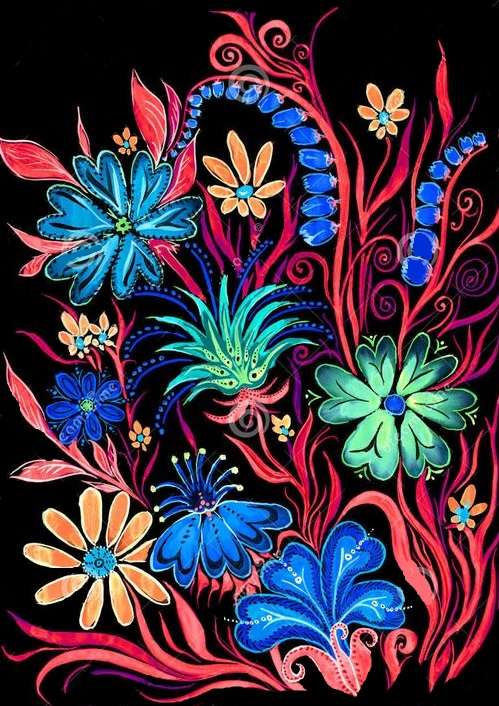
| Author Notes |
HAIKU is a Japanese short unrhymed poem that uses imagistic language to express the essence of a deeply felt moment in time. It resonates on a deeper level, leaving the reader enlightened and making an insightful connection between the top two lines and the last one, called the SATORI. HAIKU uses a dash to pause before the SATORI. It was created in the 17th century by Zen Monk, Matsuo Basho. Haiku alludes to a season of the year. In Japan, haiku is written in 17 syllables and three lines ( 5/7/5) but in English is 17 syllables OR LESS because English and Japanese syllables are different. Avoid capitalization (except proper names) and punctuation.
click here to read haiku examples click here to read haiku rules click here to read why is 5/7/5 OR LESS rule Thank you very much for taking the time to read and review my poem. Gypsy "Poetry heals the wounds inflicted by reason." - Novalis pictures from pinterest |
![]()
By Gypsy Blue Rose
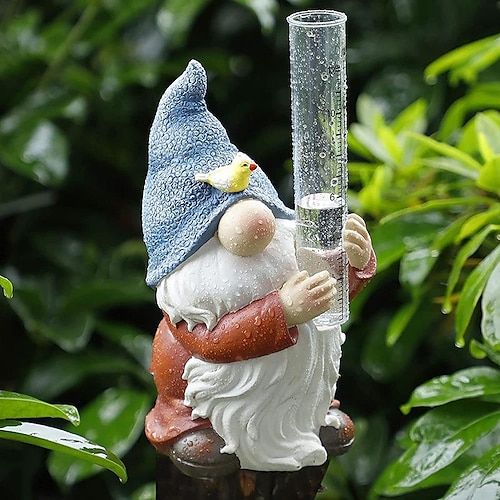

| Author Notes |
HAIKU is a Japanese short unrhymed poem that uses imagistic language to express the essence of a deeply felt moment in time. It resonates on a deeper level, leaving the reader enlightened and making an insightful connection between the top two lines and the last one, called the SATORI. HAIKU uses a dash to pause before the SATORI. It was created in the 17th century by Zen Monk, Matsuo Basho. Haiku alludes to a season of the year. In Japan, haiku is written in 17 syllables and three lines ( 5/7/5) but in English is 17 syllables OR LESS because English and Japanese syllables are different. Avoid capitalization (except proper names) and punctuation.
click here to read haiku examples click here to read haiku rules click here to read why is 5/7/5 OR LESS rule Thank you very much for taking the time to read and review my poem. Gypsy "Poetry heals the wounds inflicted by reason." - Novalis pictures from pinterest |
![]()
By Gypsy Blue Rose
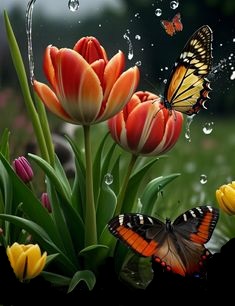
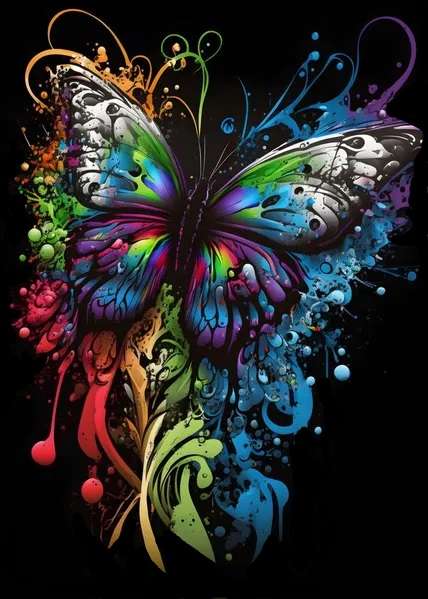
| Author Notes |
HAIKU is a Japanese short unrhymed poem that uses imagistic language to express the essence of a deeply felt moment in time. It resonates on a deeper level, leaving the reader enlightened and making an insightful connection between the top two lines and the last one, called the SATORI. HAIKU uses a dash to pause before the SATORI. It was created in the 17th century by Zen Monk, Matsuo Basho. Haiku alludes to a season of the year. In Japan, haiku is written in 17 syllables and three lines ( 5/7/5) but in English is 17 syllables OR LESS because English and Japanese syllables are different. Avoid capitalization (except proper names) and punctuation.
click here to read haiku examples click here to read haiku rules click here to read why is 5/7/5 OR LESS rule Thank you very much for taking the time to read and review my poem. Gypsy "Poetry heals the wounds inflicted by reason." - Novalis pictures from pinterest |
![]()
By Gypsy Blue Rose

| Author Note: | For Rules, Please Read My Author Notes |
fanning his feathers
for the hot hen —
peacock on parade

| Author Notes |
the male peacock is the one with the beautiful feathers. He fans his feathered tail to attract the female peahen's attention during mating season. The peahen gets to choose the male she wants.
HAIKU is a Japanese short unrhymed poem that uses imagistic language to express the essence of a deeply felt moment in time. It resonates on a deeper level, leaving the reader enlightened and making an insightful connection between the top two lines and the last one, called the SATORI. HAIKU uses a dash to pause before the SATORI. It was created in the 17th century by Zen Monk, Matsuo Basho. Haiku alludes to a season of the year. In Japan, haiku is written in 17 syllables and three lines ( 5/7/5) but in English is 17 syllables OR LESS because English and Japanese syllables are different. Avoid capitalization (except proper names) and punctuation. click here to read haiku examples click here to read haiku rules click here to read why is 5/7/5 OR LESS rule Thank you very much for taking the time to read and review my poem. Gypsy "Poetry heals the wounds inflicted by reason." - Novalis pictures from pinterest |
![]()
By Gypsy Blue Rose

splendid sun rises
aflame on the horizon —
b r i n g s w a r m m e m o r i e s

| Author Notes |
5/7/5 is a poem that has 5 syllables on the first line, 7 syllables on the second line, and 5 syllables on the third line. It's similar to haiku.
Thank you for reading and reviewing my poem, Gypsy "Think big thoughts but relish small pleasures." -- Jackson Brown Jr. pictures from pinterest |
![]()
By Gypsy Blue Rose


| Author Notes |
The Beatitudes are eight blessings recounted by Jesus in the Sermon on the Mount in the Gospel of Matthew 5:3 -12, and The four Beatitudes in Luke 6:20-22 are set within the Sermon on the Plain. to read the beatitudes click here
HAIKU is a Japanese short unrhymed poem that uses imagistic language to express the essence of a deeply felt moment in time. It resonates on a deeper level, leaving the reader enlightened and making an insightful connection between the top two lines and the last one, called the SATORI. HAIKU uses a dash to pause before the SATORI. It was created in the 17th century by Zen Monk, Matsuo Basho. Haiku alludes to a season of the year. In Japan, haiku is written in 17 syllables and three lines ( 5/7/5) but in English is 17 syllables OR LESS because English and Japanese syllables are different. Avoid capitalization (except proper names) and punctuation. click here to read haiku examples click here to read haiku rules click here to read why is 5/7/5 OR LESS rule Thank you very much for taking the time to read and review my poem. Gypsy "Poetry heals the wounds inflicted by reason." - Novalis pictures from pinterest |
![]()
By Gypsy Blue Rose


| Author Notes |
SENRYU is a Japanese short unrhymed poem that uses imagistic language to express the essence of a deeply felt moment in time. Unlike Haiku, senryu is about human nature and doesn't need a season word. It resonates on a deeper level, leaving the reader enlightened and making an insightful connection between the top two lines and the last one, called the SATORI. It's written in 17 syllables OR LESS and three lines.
Thank you for reading and reviewing my poems. Gypsy "Poetry heals the wounds inflicted by reason." - Novalis pictures from pinterest |
![]()
By Gypsy Blue Rose

| Author Note: | For Rules, Please Read My Author Notes |
autumn wind
sweeps kindle and fallen leaves—
for the fire

| Author Notes |
HAIKU is a Japanese short unrhymed poem that uses imagistic language to express the essence of a deeply felt moment in time. It resonates on a deeper level, leaving the reader enlightened and making an insightful connection between the top two lines and the last one, called the SATORI. HAIKU uses a dash to pause before the SATORI. It was created in the 17th century by Zen Monk, Matsuo Basho. Haiku alludes to a season of the year. In Japan, haiku is written in 17 syllables and three lines ( 5/7/5) but in English is 17 syllables OR LESS because English and Japanese syllables are different. Avoid capitalization (except proper names) and punctuation.
click here to read haiku examples click here to read haiku rules click here to read why is 5/7/5 OR LESS rule Thank you very much for taking the time to read and review my poem. Gypsy pictures from pinterest |
![]()
By Gypsy Blue Rose

| Author Note: | poem in black font and rules in my author notes |
fallen soldiers’ blood
shroud the barren battleground—
withering field of poppies

| Author Notes |
fallen soldiers' blood
shroud the barren battleground - withering field of poppies JISEI (death poem) is a genre of Japanese poetry. It offers a reflection on the imminent death of the author. It originated in Zen Buddhism. to see source click here DEATH POEM is a genre of poetry that developed in Japan. They tend to offer a reflection on death coupled with a meaningful observation on life. It originates in Zen Buddhism. The poem's structure can be written in haiku 5/7/5 or tanka 5/7/5/7/7 form. Death poems are typically graceful, natural, and emotionally neutral. Death described, metaphorically, references such as sunsets, autumn or falling cherry blossom suggest the transience of life. wikipedia Gypsy "Poetry heals the wounds inflicted by reason." - Novalis pictures from pinterest |
![]()
By Gypsy Blue Rose


| Author Notes |
I know, this poem is a little creepy, LOL I never know what my muse is going to come up with.
Thank you for reading my poem and taking the time to review it. Gypsy |
![]()
By Gypsy Blue Rose
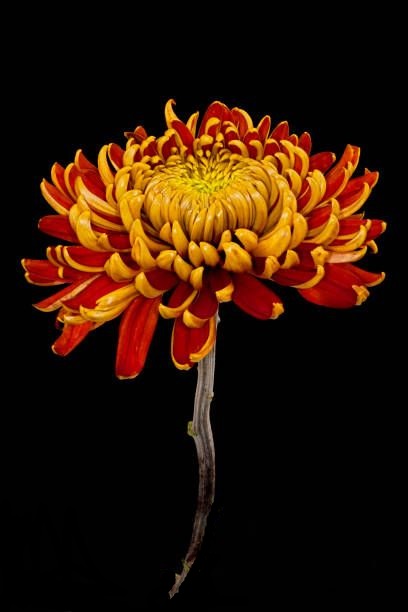
| Author Note: | For Rules, Please Read My Author Notes |
after the funeral,
the father kept quiet—
as did the mum

| Author Notes |
Mum is short for the chrysanthemum flower
Mum or mom is short for mother mum means keeping quiet SENRYU is a Japanese short unrhymed poem that uses imagistic language to express the essence of a deeply felt moment in time. Unlike Haiku, senryu is about human nature and doesn't need a season word. It resonates on a deeper level, leaving the reader enlightened and making an insightful connection between the top two lines and the last one, called the SATORI. It's written in 17 syllables OR LESS and three lines. Gypsy "Poetry heals the wounds inflicted by reason." - Novalis pictures from pinterest |
![]()
By Gypsy Blue Rose


| Author Notes |
SENRYU is a Japanese short unrhymed poem that uses imagistic language to express the essence of a deeply felt moment in time. Unlike Haiku, senryu is about human nature and doesn't need a season word. It resonates on a deeper level, leaving the reader enlightened and making an insightful connection between the top two lines and the last one, called the SATORI. It's written in 17 syllables OR LESS and three lines.
Thank you very much for reading and reviewing my poems. Gypsy "Poetry heals the wounds inflicted by reason." - Novalis pictures from pinterest (top picture an Anthill) |
![]()
By Gypsy Blue Rose

sea and sky
kiss on the horizon—
world between us

| Author Notes |
HAIKU is a Japanese short unrhymed poem that uses imagistic language to express the essence of a deeply felt moment in time. It resonates on a deeper level, leaving the reader enlightened and making an insightful connection between the top two lines and the last one, called the SATORI. HAIKU uses a dash to pause before the SATORI.. Haiku is about nature and it alludes to a season of the year. The haiku is written from an observer's point of view. In Japan, haiku is written in 17 syllables and three lines ( 5/7/5) but in English is 17 syllables OR LESS because English syllables are longer than Japanese syllables. Avoid capitalization (except proper names) and punctuation. click here to read Haiku Society of America, HAIKU EXAMPLES === click here to read Haiku Society of America HAIKU RULES === click here to read why is 5/7/5 OR LESS rule === Modern Haiku
Thank you very much for reading and reviewing my poems. Gypsy "Poetry heals the wounds inflicted by reason." - Novalis pictures from pinterest |
![]()
By Gypsy Blue Rose

you’re my wishing star
and my shimmering river
of moonlight
| Author Notes |
SENRYU is a Japanese short unrhymed poem that uses imagistic language to express the essence of a deeply felt moment in time. Unlike Haiku, senryu is about human nature and doesn't need a season word. It resonates on a deeper level, leaving the reader enlightened and making an insightful connection between the top two lines and the last one, called the SATORI. It's written in 17 syllables OR LESS and three lines.
Thank you very much for reading and reviewing my poems. Gypsy "Poetry heals the wounds inflicted by reason." - Novalis pictures from pinterest |
![]()
By Gypsy Blue Rose


| Author Notes |
HAIKU is a Japanese short unrhymed poem that uses imagistic language to express the essence of a deeply felt moment in time. It resonates on a deeper level, leaving the reader enlightened and making an insightful connection between the top two lines and the last one, called the SATORI. HAIKU uses a dash to pause before the SATORI.. Haiku is about nature and it alludes to a season of the year. The haiku is written from an observer's point of view. In Japan, haiku is written in 17 syllables and three lines ( 5/7/5) but in English is 17 syllables OR LESS because English syllables are longer than Japanese syllables. Avoid capitalization (except proper names) and punctuation.
click here to read Haiku Society of America, HAIKU EXAMPLES click here to read Haiku Society of America HAIKU RULES click here to read why is 5/7/5 OR LESS rule Modern Haiku Thank you very much for reading and reviewing my poems. Gypsy "Poetry heals the wounds inflicted by reason." - Novalis |
![]()
By Gypsy Blue Rose

| Author Note: | For Rules, Please Read My Author Notes |

| Author Notes |
HAIKU is a Japanese short unrhymed poem that uses imagistic language to express the essence of a deeply felt moment in time. It resonates on a deeper level, leaving the reader enlightened and making an insightful connection between the top two lines and the last one, called the SATORI. HAIKU uses a dash to pause before the SATORI.. Haiku is about nature and it alludes to a season of the year. The haiku is written from an observer's point of view. In Japan, haiku is written in 17 syllables and three lines ( 5/7/5) but in English is 17 syllables OR LESS because English syllables are longer than Japanese syllables. Avoid capitalization (except proper names) and punctuation. click here to read Haiku Society of America, HAIKU EXAMPLES === click here to read Haiku Society of America HAIKU RULES === click here to read why is 5/7/5 OR LESS rule === Modern Haiku
Thank you very much for reading and reviewing my poems. Gypsy "Poetry heals the wounds inflicted by reason." - Novalis pictures from pinterest |
![]()
By Gypsy Blue Rose

dad rakes dead leaves
in the front yard—
wind wins

| Author Notes |
SENRYU is a Japanese short unrhymed poem that uses imagistic language to express the essence of a deeply felt moment in time. Unlike Haiku, senryu is about human nature and doesn't need a season word. It resonates on a deeper level, leaving the reader enlightened and making an insightful connection between the top two lines and the last one, called the SATORI. It's written in 17 syllables OR LESS and three lines.
Gypsy "Poetry heals the wounds inflicted by reason." - Novalis pictures from pinterest |
![]()
By Gypsy Blue Rose

little boy
making snow angels—
melts the heart

| Author Notes |
Thank you for reading my poem,
Gypsy |
|
You've read it - now go back to FanStory.com to comment on each chapter and show your thanks to the author! |
![]()
| © Copyright 2015 Gypsy Blue Rose All rights reserved. Gypsy Blue Rose has granted FanStory.com, its affiliates and its syndicates non-exclusive rights to display this work. |
© 2015 FanStory.com, Inc. All Rights Reserved. Terms under which this service is provided to you. Privacy Statement